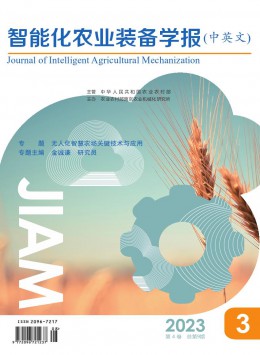英文广告论文精选(九篇)

第1篇:英文广告论文范文
[KeyWords]Englishadvertisement;discourseanalysis;systemicfunctionalgrammar;functionalgrammar
[摘要]广告现在已经成为社会生活不可缺少的一部分,对广告语篇分析有其存在的必然性。论文首先论述了广告的定义,影响以及其文案的组成部分。接下来论述了关于语篇分析,从语篇分析的概念,组成部分,以及两个层面。语篇分析是一个描写,解释,说明,评估的过程,对语篇理解了还要会做出评论。而系统功能语法被指出这个语法比其他语言学框架更适合用来分析语篇,所以论文接下来描述了系统功能语法的理论内容去支持语篇分析,系统功能语法包括系统语法和功能语法。系统语法核心思想是认为语言是有个意义潜势的系统网络。功能语法从语言的功能的角度总结出语言的三大元功能:概念功能,人际功能,语篇功能。最后作者用以上的相关理论对一个英语广告实例进行了具体分析。通过以上论述和分析,作者证明了系统功能语法指导语篇分析的可行性。作者也望两者能更加的完善,以至能更系统地分析理解广告语篇。
[关键词]英语广告;语篇分析;系统功能语法;功能语法
1.Introduction
Sincethe1960s,Halliday,theProfessoroflinguistics,developsasystematicandcomprehensivetheoryoflanguage,called“Systemic-FunctionalGrammar(SFG)”,andpublisheshisbook“AnIntroductiontoFunctionalGrammar”in1985and1994.Manyscholarsalsopublishedanumberofbooksandpapersonsystemicgrammar.TheresearchofSystemicFunctionalGrammarbeginsin1970sandbecomepopularinthelate1980s.
Englishadvertisingbeginsinthemedievaltimesandtheadvertising-boomappearsinthe1920s.Todayadvertisinghasbecomeanindispensabletoolformoderncompaniesandinstitutions.SothediscourseanalysisofEnglishadvertisingisverynecessary.Withtheanalysis,peoplecanunderstandtheadvertisementcompletelyandsupplythefurtherimprovementwithsomeevidence.
NowfewpeoplehavetriedtousethetheoriesoftheSFGtoanalyzeEnglishadvertisements.ButProfessorHuangguowenmakesadetailedstudyonthecombinationoftheSFGandtheanalysisofEnglishadvertisementinhisnewlypublishedbook“TheoryandPracticeofDiscourseAnalysis---AStudyinAdvertisingDiscourse(2001)”.
ThethesiswillmakeatentativeendeavortoapplythetheoriesoftheSFGtotheanalysisofEnglishadvertisements,hopingtoprovethatthetheoriesofSFGcanbeusedtoanalyzeEnglishadvertisingandareactuallyeffective.
2.Advertising
2.1Thedefinitionofadvertising
Mostofthescholarsholdthat“Advertising”originatesfromtheLatinword“Adventure”whichmeansarousingpeople’sinteresttotakeaction.In1300to1475,itwaschangedtothemedievalEnglish“Advertise”,whichmeant,“Someonepaysattentiontosomething”.Thefirstnewspaperadvertisementissaidtohaveappearedin1704intheBostonNewsLetterinAmerica.Duringthe18thcenturyadvertisinggrewinpopularitybothinBritainandtheAmericancolonies.
Before1890,inthewestern,thedefinitionofadvertisingisgenerallycalled,as“Advertisingisapieceofnewsabouttheproductortheservice.”In1948,TheCommitteeonDefinitionsoftheAmericanMarketingAssociationdefines:“thenon-personalcommunicationofinformationusuallypaidforandusuallypersuasiveinnatureaboutproducts,serviceorideabyidentifiedsponsorsthroughthevariousmedia.”AmericanSponsorsAssociationhold:Advertisingisthepaidcommunicationforthemasses,anditsfinalpurposeistotransmitmessages,changetheattitude,inducepeopletotakeactionandbenefitidentifiedsponsors.TheEncartaEncyclopediadefines“advertising”as“aformofcommercialmasscommunicationdesignedtopromotethesaleofaproductorservice,oramessageonbehalfofaninstitution,organization,orcandidateforpoliticaloffice”.[1]
Now,drawthefollowingconclusion:“Advertisingisapaid,mass-mediatedattempttopersuade”.[2]Firstly,identifiedsponsorsneedtopayforit.Secondly,itisdeliveredthroughacommunicationmediumdesignedtoreachmorethanoneperson.Thirdly,itisthepubliccommunicationdesignedtochangeorreinforcetheattitudeandtheaction.
2.2Theeffectofadvertising
Advertisingcanmakeacontributiontosales---alongwiththerightproduct,therightprice,andtherightdistribution.Itcannotonlycreatesocialwealthdirectlyandprovidelotsofjobs,butalsopromotethedevelopmentofotherindustries.AndadvertisingisrelatedtoGDP(GrossDomesticProduct)inthatitcancontributetolevelsofoverallconsumerdemandwhenitplaysakeyroleinintroducingnewproducts.Advertisingcanhaveastabilizingeffectondownturnsinbusinessactivity.
Advertisingisallegedtostimulatecompetitionandthereforemotivatefirmstostriveforbetterproducts,betterproductionmethods,andothercompetitiveadvantagesthatultimatelybenefittheeconomyasawhole.Duetotheeconomiesofscaleproducedbyadvertising,consumersactuallyrealizeless—expensiveproducts.Asbroad-baseddemandstimulationresultsinlowerproductionandadministrativecostsperunit,lowpricesarepassedontoconsumers.Thepressureofcompetitionandthedesiretohavefresh,marketableproductsstimulatefirmstoproduceimprovedproductsanddosomeinnovations.Allofthesecancontributetothestandardoflivingandqualityoflifeinasociety.
Advertisingeducatesconsumers,equippingthemwiththeinformationtheyneedtomakeinformedpurchasedecisions.Consumersbecomemoreeducatedregardingthefeatures,benefits,functions,andvalueproducts.Further,consumerscanbecomemoreawareoftheirowntendenciestowardbeingpersuadedandrelyingoncertaintypesofproductinformation.Accordingtotheabove,better-educatedconsumersenhancetheirlifestylesandeconomicpowerthroughastutemarketplacedecision-making.
Inall,withthedevelopmentofthetechnologyandthediversityofthemassmedia,advertisinghasinfluencedpeoplepervasivelyinthedailylife.Advertisingplaysanimportantroleinthesociety.Foreigncountries(especiallyAmerican)havedevelopedtheadvertisingforalongtime,soChineseneedtousetheexperienceofothercountriesforreference.ThatisthestudyofEnglishadvertisinghasitsnecessity.ThestudyofanalysisofEnglishadvertisingismeaningful.
2.3Thecomponentsofcopywriting
“Copywritingistheprocessofexpressingthevalueandbenefits;abrandhastooffer,viawrittenorverbaldescriptions.”[3]Acompletepieceofcopywritinggenerallyconsistsofheadline(includingsub-headline),bodycopy,slogan,andsupplementaryitems.
Theheadlineisthemostimportantpart,whichistheleadingsentenceusedatthetoporbottomoftheadvertising.Itshouldarouseinterestsandattractattentions.Itcanmakepeoplekeeponreadingandgettoknowmoreabouttheproductbeingsold.Itmustbeshort,simplewordaboutnotmorethan10words,butitincludesenoughinformation,thenameofbrandandsoon.Subheadisanadditionalheadlineusuallyappearsaboveorbelowtheheadline.Itincludesimportantbrandinformationnotincludedintheheadline.Liketheheadlineittransmitskeysellingpointsorbrandinformationquickly.Itshouldreinforcetheheadlineandservesasatransitiontothebodycopy.
Bodycopytellsamorecompletestoryabouttheproductorservice,onlyoneoutof10readersreadthebodycopy,soitwillarousepeople’sinterestandmoreinformationforpeopletoknowof.Generallyitincludesemotionalcopyandreason-whycopy.
Slogan,itsstructureissimilartotheheadline.Asloganisashortphraseusedtohelpestablishanimage,identity,orpositionforabrandoranorganization.Itcanprovidescontinuityacrossdifferentmediaandbetweenadvertisingcampaigns.Itexpressesadvertisingmessagewithbrief,repeatable,andmemorablestatement.Thatis,itcanmakeconsumerstakeactions.Takesomefamousslogansforexample:“Justdoit!(Nike)”,“Freshupwithseven-up(Seven-up)”,“ThingsgobetterwithCoca-cola(Coca-cola)”.
Supplementaryitemsarethecompleteinstructionsofadvertisingcontent.Itincludesillustration,trademark,andnameofcommodity,logotype,address,telephonenumber,price,accountsnumber,boxandpanel,sealandsoon.Illustrationandtrademarkareveryimportantinthem.Mostofpeoplereadadfollowingtheorder:illustration,headline,andbodycopy.Soillustrationisthemostimportantpartforasuccessfulad.Illustrationarousesinteresttoreadtheheadline,identifythesubjectofthead,clarifyclaimsmadebythecopy,andcreateafarmableimpressionoftheinformation.Trademarkincludesbrandname,corporateorstorenameandvisualsymbol.Itmaybeuseinshortening.Awell-knownbrandnameisworthyandthereforeisofgreatimportancetoacorporation.Thefeaturesofthetrademarkaredescribableandremarkable,suchas“Ford”,“Adidas”.
3.Discourseanalysis
In1952,Zellings.Harriss,thestructuralists,reportedthearticle“DiscourseAnalysis”inthemagazine“Language”.Inthelast50years,alotofscholarsmakesomeeffortstothissubjectandgainsomeachievements.Fromthedocument,discourseanalysisinvolveslinguistics,semiotics,psychology,anthropology,sociology,literature,informationscienceandsoon,andgraduallyformstheknowledgestudyinglanguage-in-useinthecommunication.
“Discourseanalysisisthestudyofhowsentencesinspokenandwrittenlanguageformlargermeaningfulunitssuchparagraphs,conversations,interview,etc.Forexample,discourseanalysisdealswith(a)howthechoiceofarticles,pronouns,andtensesaffectsthestructureofthediscourse.(b)Therelationshipbetweenutterancesinadiscourse.(c)Themovesmadebyspeakerstointroduceanewtopic,changethetopic,orassertahigherrolerelationshiptotheotherparticipants.”[4]
“Discourseanalysisemphasizesthatlanguageisnotmerelyaself-containedsystemofsymbolsbutmoreimportantlyamodeofdoing,being,andbecoming.Discourseanalysisseekstodescribeandexplainlinguisticphenomenaintermsoftheaffective,cognitive,situational,andculturalcontextsoftheiruseandtoidentifylinguisticresourcesthroughwhichwe(re)constructourlife(ouridentity,belief,ideology,andsoforth).Essentially,itaskswhyweuselanguagethewaywedoandhowweliveliveslinguistically.Discourseanalysisinsistsontheuseofnaturallyoccurringlanguagedate(asopposedtoinventeddata)”.[5]
Generallyspeaking,discourseanalysisisadevelopingandnon-qualitativesubject,whichhasneithertheguidanceofaspecifictheorynorgenerallyrecognizedanalysiswaysandsteps.Schiffirn,Americandiscourseanalyst,introducessixmethodsusinginthediscourseanalysis:speechacttheory,internationalsociologist,andtheethnographyofcommunication,pragmatics,conversationanalysis,andvariationanalysis.M.A.K.Hallidayinhisbook“AnintroductiontoFunctionalGrammar”holdsthat“Theaim(ofSFG)hasbeentoconstructagrammarforpurposesoftextanalysis:onethatwouldmakeitpossibletosaysensibleandusefulthingsaboutanytext,spokenorwritten,inmodernEnglish.”[6]
3.1Purposeofdiscourseanalysis
SFGconstructagrammarforpurposesoftextanalysis,somostofscholarsinsistthatitismoresuitablefordiscourseanalysisthananyothertheories.ThatisSFGistheapproachproposedinthestudyofdiscourseanalysis.ThediscourseanalysisguidingbySFGiscalledas“Functionaldiscourseanalysis”.
Someanalyststhinkdiscourseanalysisistheinterpretiveactivity,becauseitspurposeistohelpthereadersunderstandthemeaningofthetextandthewriter.Butfunctionaldiscourseanalysisistheexplanatoryactivity;itspurposeistoexplainwhythetextexpressesthemeaning.HallidayandHasanholdthatthepurposeofthetextanalysisisexplanationnotinterpretation.Foratext,thepurposeof“interpretation”istounderstandwhatthemeaningofthetextis,butthepurposeof“explanation”istomakeclearthathowthetextexpressesitsmeaning.Accordingtotheauthor’sunderstanding,theexplanatoryactivityincludesinterpretiveactivity,becausebeforeexplaininghowatextexpressesitsmeaning,peoplewillknowwhatthemeaningofatextis.
Thepurposeoffunctionaldiscourseanalysisistoevaluatethetext.Beforeevaluatingatext,discourseanalysismuststudythetextfrom“Whatisthemeaningofthetext?”“Howdoesthetextexpressthemeaning?”“Whydoesthetextexpressthemeaning?”
Inall,thepurposeofdiscourseanalysisisexplanatoryactivitytoevaluatethetext.
3.2Scopesofdiscourseanalysis
Hallidayholdsthatdiscourseanalysisconsistsofcontextofculture,contextofsituation,language.
(I)Contextofculture:languageisthesocialphenomenonandthereflectionofthesocialactivity.Everytextisproducedandthenaffectedinaparticularcontextofculture.“Contextofculture”referstothetextexpressingallthemeaningsinthespecialsocietyandculture(includingpurposeofcommunication,wayofcommunication,formofcommunication,contentofcommunication,etc).Contextofcultureisreflectedby“genre”.Genreconsistsofschematicstructureandrealizationalpattern.
(II)Contextofsituation:itisimmediateenvironmentoflanguageactivity,whichistime,place,talkingcontent,therelationamongpeoplerelatedtotransfercommunicationalmeanings.HallidayandHasan(1985)dividecontextofsituationintothreeparts:field,tenorandmode.
(a)Fieldreferstowhatisbeingtalkabout,whatisitthattheparticipantsareengagedin,inwhichthelanguagefiguresassomeessentialcomponents.
(b)Tenorreferstothepeopleinvolvedinthecommunicationandtherelationshipbetweenthem.Whatkindsofrolerelationshipsobtainamongtheparticipants,includingpermanentandtemporaryrelationshipsofonekindoranother,boththetypesofspeechrolethattheyaretakingoninthedialogueandthewholeclusterofsociallysignificantrelationshipsinwhichtheyreferto.
(c)Modereferstohowthelanguageisfunctioningintheinteraction,e.g.whetheritiswrittenorspoken.
(III)Languageincludessemantics,lexico-grammar,andphonology/graphology.AccordingtotheviewofHalliday,languagechieflyexpressesthreefunctions/meanings:Ideationalfunction,InterpersonalfunctionandTextualfunction.Thethreefunctionsarerelatedtocontextandlexico-grammar.Fielddeterminestheexperientialmeaningsthatexpressed.Tenordeterminestheinterpersonalmeanings.Modedeterminesthetextualmeanings.Andthesethreefunctionsareembodiedbylexico-grammar.“However,but,nevertheless”expresstextualmeanings.
Schematicstructure
Contextofculture
Realizationalstructure
Field
TextContextofsituationTenor
Mode
Semantics
LanguageLexico-grammar
Phonology/graphology
3.3Levelsofdiscourseanalysis
In“AnIntroductiontoFunctionalGrammar”,Hallidayholds“Inanypieceofdiscourseanalysis,therearealwaystwopossiblelevelsofachievementtoaimat.Oneisacontributiontotheunderstandingofthetext:thelinguisticanalysisenablesonetoshowhowandwhy,thetextmeanswhatitdoes.Intheprocess,therearelikelytoberevealedmultiplemeanings,alternatives,ambiguities,metaphorsandsoon.”[7]Thatis,thelowleveristheactivityofdescribingandexplainingthetext.“Itisonethatshouldalwaysbeattainableprovidedfeaturesofthelanguage---provideditisbasedonagrammar,inotherwords.”Anotherlevelistheevaluationofthetext:“thelinguisticanalysismayenableonetosaywhythetextis,orisnot,aneffectivetextforitsownpurposed---inwhatrespectsitsucceedsandinwhatrespectsitfails,orislesssuccessful.”[8]Thatis,thehighlevelistheactivityofinterpretingandevaluatingthetext.Inordertoattainthegoal,itrequiresanalyzingthetext,andanalyzingthecontext(contextofsituation,contextofculture)andtherelationshipbetweencontextandtext.Sotheanalystsneedtodecodethefurthermeaningofthetextandevaluatetheuseofwordsandgrammarsincontextofsituationandthecontextofculture.
Accordingtohuangguowen,SFGismoresuitableforanalyzingthetext.ItisbecauseSFGisthetextgrammar.Itisbecausegrammaristodescribehowtheuseoflanguage,thatis,thewaytosayandunderstandthemeaningofthetextclearly.ItisbecauseSFGdescribethesystemicnetworkofthethreemetafunctionclearly.ItdoesbecauseapplyingtheframeworkofSFGtoanalyzethetextcanavoidevaluatingatwill.
ThefollowingisthedescriptionofSFG,andwhyitcanguidediscourseanalysis.
4.Systemicfunctionalgrammar
InHalliday’sbook“AnIntroductiontoFunctionalGrammar”,hesays”thetheoryonwhichthisdescriptionisbased,systemictheoryfollowsintheEuropeanfunctionaltradition.ItislargelybasedonFirth’ssystem-structuretheory,butderivesmoreabstractprinciplesfromHjelmslevandowesmanyideastoPragueSchool.Theorganizingconceptisthatofthe“system”,whichisusedessentiallyinFirth’ssenseofafunctionalParadigmbutdevelopedintotheformalconstructofa‘systemnetwork’.”[9]
SFGhastwocomponents:systemicgrammarandfunctionalgrammar.InHuzhuanglin’sbook“Linguistics.AcourseBook”,heholdsthat“Systemicgrammaraimstoexplaintheinternalrelationsinlanguageasasystemnetwork,ormeaningpotential.Andthisnetworkconsistsofsubsystemfromwhichlanguageusersmakechoices.Functionalgrammaraimstorevealthatlanguageisameanofsocialinteraction,basedonthepositionthatlanguagesystemandtheformsthatmakeitupareinescapablydeterminedbytheusesorfunctionswhichtheyserve.”[10]
4.1Systemicgrammar
“Systemicgrammarisanapproachtogrammaticalanalysiswhichisbasedonaseriesofsystems.Eachsystemisasetofoptionsofwhichonemustbechosenateachrelevantpointintheproductionofanutterance.Forexample,inEnglish,thespeakerorwritermakeschoicesamongthesystemsofnumber.”[11]Thecentralcomponentofasystemicgrammarisachartofthefullsetofchoicesavailableinconstructingasentence,withaspecificationoftherelationshipsbetweenchoices.Halliday’ssystemicgrammarhasthefollowingaspects:First,ithas“system”asitscentralcategory.Second,itlaysstressonrelatingthesociology.Third,itattachesimportancetodescribethecharacteristicsofparticularlanguagesandparticularvarietiesoflanguages.Fourth,languageisamodeofactionandnotaninstrumentofreflection.Fifth,itusesclinestoexplainsomelanguageproblems.
AccordingtoHuzhuanglin’sinstruction“Insystemicgrammar,thenotionofsystemismadeofacentralexplanatoryprinciple,thewholeoflanguagebeingconceivedasa‘systemofsystems’,systemicgrammarisconcernedwithestablishinganetworkofsystemsofrelationships,whichaccountsforallthesemanticallyrelevantchoicesinthelanguageasawhole.”[12]
Asystemisalistofchoices;thechoicesinasystemaremutuallyexclusive.Everysystemisfinite.Themeaningofeverychoiceinasystemdependsonthemeaningofotherchoiceinthesystem.
Inall,systemicgrammarmakespeopleknow“system”and“structure”.Itrequirespeopletoanalyzethetextlogicallyandregardthetextasaunit.
Inthedescriptionofthesystem,ifthefeatureofthesystemappearsinothersystem,thatcanbesimultaneityorechelon.Ifthetwosystemsappearinorder,thefeaturesofthemareordinal.Thesystemicgrammarisselectingageneralareaofmeaning,andgraduallybreakingitintosmallerandsmallersub-areas.Choiceismeaning.SystemgammardescribesthreeMetafunctions.Eachofthemetafunctionsisacomplexsystemconsistedofothersystems,andchoicesaresimultaneouslydoneinthethreemetafunctions.Thisisthecloserelationshipbetweensystemicgrammarandfunctionalgrammar.
4.2Functionalgammar
“Inafunctionalgrammar,ontheotherhand,thedirectionisreversed.AlanguageisinterpretedasaSystemofmeaningscanberealized.”[13]“FunctionalGrammaraimstorevealthatlanguageisameanofsocialinteraction,basedonthepositionthatlanguagesystemandtheformsthatmakeitupareinescapablydeterminedbytheusesorfunctionswhichtheyserve.”[14]ThefunctionsoflanguagearethemostimportantthingsinFunctionalGrammar.
Asthetoolofpeople’scommunication,languageundertakesallkindoffunctions.Hallidaydividesthefunctionoflanguageintothreekinds:ideationalmetafunction,interpersonalmetafunction,andtextualmetafunction.
4.2.1IdeationalMetafunction
“…Afundamentalpropertyoflanguageisthatitenableshumanbeingstobuildamentalpictureofreality,tomakesenseoftheirexperienceofwhatgoesonaroundthemandinsidethem.”[15]Itistoconveynewinformation,tocommunicateacontentthatisunknowntothelistener.
Theideationalmetafunctionistoorganizethespeakerorwriter’sexperienceoftherealorimaginaryworldandincludesexperientialfunctionandlogicalfunction.Whatexperientialfunctionisthatlanguageexpressespeople’sexperiencesinexternalworld(things,eventsqualities,etc)andinternalworld(thoughts,beliefs,feelings,etc).Whatlogicalfunctionreferstothatlanguageexpressesthelogicalrelationshipbetweentwoormorethantwomeaningunits.
(I).ExperientialFunction
Experientialfunctionischieflyembodiedbytransitivityandvoice.“…Parallelwithitsevolutioninthefunctionofmood,expressingtheactive,interpersonalaspectofmeaning,theclauseevolvedsimultaneouslyinanothergrammaticalfunctionexpressingthereflective,experientialaspectofmeaning.Thislateristhesystemoftransitivity.Transitivityspecifiesthedifferenttypesofprocessthatarerecognizedinthelanguage,andthestructuresbywhichtheyareexpressed.”[16]Transitivityisasemanticsystem.Itspurposeistodividesomethingaroundpeopleintoseveralprocessesinvolvingparticipantandcircumstantialelement.Hallidayholdsthattransitivityincludessixprocesses:(a)Materialprocess.(b)Mentalprocess.(c)Relationalprocess.(d)Behavioralprocess.(e)Verbalprocess.(f)Existentialprocess.
(a)MaterialProcess:processofdoing
Materialprocessisaprocessofdoing.Theprocessusuallyconsistsofverb,actor(logicalsubject)andgoal(nounorpronoun)
Hekilledallthepeople
ActorProcessgoal
(b)MentalProcess:processofthinking
Mentalprocessisaprocessofthinkinginvolvingperception(see,look),reaction(like,fear)andcognition(knowing,believing,andunderstanding)andsoon.Metalprocesshastwoparticipants:sensor,andphenomenon.Sensorreferstothepersonwhoperceivesandphenomenonisthesomethingthatisperceivedbythesensor.Phenomenonincludesconcretepersonorobjects,abstractthings,happenedeventsandsoon.
IHearHimplayingthepianonexttothedoor.
SensorProcessPhenomenon
(c)RelationalProcess:processofbeing
Relationalprocessisaprocessofbeing.Ithastwotypes’attributiveprocessandidentifyingprocess.Relationalprocessconsistsofintensive,circumstantialandpossessive.Intheattributiveprocess,theparticipantsareattributeandcarrier.
TheclockHasThreepointers.
CarrierProcessAttribute
Intheidentifyingprocess,theparticipantsareidentifiedandidentifier.
ThiscarIsMine.
IdentifiedProcessIdentifier
(d)BehavioralProcess:processofbehaving
Behavioralprocessisaprocessofbehaving,suchasbreathe,dream,smile,laugh,cry,andcough.Thebasiccomponentsoftheprocessare“behaver”and“process”.Thispointissimilartothementalprocess,butdifferentfromthematerialprocess.
SheCriedLoudly.
BehaverProcessCircumstantial
(e)VerbalProcess:processofsaying
Verbalprocessisaprocessofsaying.“Saying”hastobeinterpretedinaratherbroadsense;itcoversanykindofsymbolicexchangeofmeaning.Theverbalwordsare“tell,say,talk,describe,boast,praise”.Theverbalizationitselfiscalledtheverbiage.
TheteacherTelledThestudent“Don’tdisturbothers.”
SayerProcessReceiverVerbiage
(f)ExistentialProcess:processofexisting
Existentialprocessisaprocessofexisting.Ineveryexistentialprocess,itmusthavean“Existent”.“There”hasnorepresentationalfunction.
ThereIsAnappleOnthetree.
ProcessExistentCircumstance
Generallyspeaking,mostoftheprocessesrepresentingdescriptivemeaningaretherelational,existentialprocessandthementalprocesses.However,mostoftheprocessesrepresentingnarrativemeaningarematerialprocesses.
“Voiceisthewaysinwhichalanguageexpressestherelationshipbetweenaverbandthenounphraseswhichareassociatedwithit.Twosentencescandifferinvoiceandyethavethesamebasicmeaning.However,theremaybeachangeinemphasisandonetypeofsentencemaybemoreappropriate.”[17]Itisrepresentedcommonlybyactivevoiceandpassivevoice.Inordertomakethestructureofthetextreasonableandthecontextconsistent,speakersneedtodoanappropriatechoicetothevoice.
II.LogicalFunction
Logicalfunctionmainlyreferstothelanguagefunction,whichrepresentstheco-ordinateorsubordinatelogicalrelationsoflanguage.Hallidayresearchesthefunctionfrominterdependencyandlogical-semanticrelation.Usingthetwofunctionssimultaneouslytoresearchthelanguage,thelanguagecanbeanalyzedcompletely.
4.2.2InterpersonalMetafunction
Interpersonalmetafunctionservestomakefulluseoflanguagetoexpresstherelationshipbetweenthesocietyandtheperson.Withtheuseoflanguage,peoplecommunicatewithothers,establishandkeepinterpersonalrelationships,affectpeople’sbehaviorsandexpresstheviewabouttheworld.Interpersonalmetafunctionisrealizedbymoodandmodality.
(I.)Mood
AccordingtoHuzhuanglin,“Moodshowswhatrolethespeakerselectsinthespeechsituationandwhatroleheassignstotheaddressee.”[18]Moodincludesthe”subject”andthe“Finite”element.Thefunctionofthe“Finite”elementistoprovidethereferencewiththeproposition.The“subject”istheelementofeffectiveandsuccessfulpropositions.
(II).Modality
Modalityspecifiesifthespeakerisexpressinghisjudgmentormakingaprediction.Hallidayclassifiedmodalityintotwomajortypes:modalization(probability,usuality)andmodulation(obligation/inclination).
Forexample:(1)Marywillcomebacktomorrow.
(2)Heusuallygoestothepark.
4.2.3TextualMetafunction
“Textualmetafunctonisconcernedwiththecreationoftext---theresourcesforpresentinginformationastextincontext.”[19]“Thetextualfunctionfulfilstherequirementthatthelanguagecanberelatedinrealuse,havingcertainstructuresinarealcontextthatdistinguishesasingleitemfromagrammaroradictionaryinalivingpassage.”[20]Itincludesthematicstructure,informationstructureandcohesion.
(I).Thematicstructure
“Thematicstructurerelatestothestructuringoftheclauseitself---theorderinwhichelementsappearintheclause.”[21]Thethemeistheelementwhichservesasthepointofdepartureofthemessage;itisthatwithwhichtheclauseisconcerned.Andtherestoftheclauseiscalledrheme.
FollowingGeoffThompsonassumesthatthemehasfourmainfunctions:(a)Signalingthemaintenanceorprocessionof“whatthetextisabout”atthatpoint.(b)Specifyingorchangingtheframeworkfortheinterpretationofthefollowingclause.(c)Signalingtheboundariesofsectioninthetext.(d)Signalingwhatthespeakerthinksisaviable/useful/importantstarting-point.[22]
Accordingtothesyntacticstructureoftheinitialconstituentsofasentence,Hallidaydividesthemeintothreemainkinds:simpletheme,multiplethemeandclausaltheme.Inaclause,themeisconflatedwithsubjectiscalledunmarkedtheme.Athemethatissomethingotherthanthesubjectiscalledmarkedtheme.
(II)Informationstructure
Informationstructureistoorganizelanguageorganizationasinformationunit.Itisformedthestructureofinformationunitfromtheinteractionofgiveninformationandnewinformation.
Aclauseasaninformationstructureconsistsofagivenelementaccompaniedbyanewelement.The“unmarked”sequencingofinformationstructureisgiven-new.Informationstructureischieflyembodiedby“intonation”.
(III)Cohesion
InHalliday’swords“Theconceptofcohesionisasemanticone;itreferstorelationsofmeaningthatexistwiththetext,andthatdefineitasatext.”[23]ThereisfivewaysbywhichcohesioniscreatedinEnglish:reference,ellipsis,substitution,conjunctionandlexicalorganization.
(a)Reference:Aparticipantorcircumstantialelementintroducedatoneplaceinthetextcanbetakingasareferencepointforanother.
(b)Ellipsis:Someelementscanbeomittedinthetext.Itcanavoidrepeatingandhighlightthenewinformation.Itisagrammaticalwaytomakethetextwellknit.
(c)Substitution:Itmeansreplacing.Sothesupersededwordsaretheformanditssemanticmeaningwillbefoundinthereplacedelements.
(d)Conjunction:Itistouseconductedelementstoembodyallkindsoflogicalrelationsinthetext.Theconductedelementsgenerallyaresometransitionalwords,showinglogicrelationssuchastime,causeandeffect,condition.
(e)Lexicalorganization:Itincludesrepetition,synonymy/antonym,hyponymy/metonymyandcollocation.
5.AnalysisoftheEnglishadvertisement
Discourseanalysisispaidmoreandmoreattentiontothelinguists.TheaimofSFGistoconstructagrammarforpurposesoftextanalysis.FunctionalgrammarcananalyzenotonlyspokenEnglishbutalsowrittenEnglish.HopingitisprovedthatdiscourseanalysiscanonlybeguidedbythetheoryintermsofanalyzingsomeEnglishadvertisements,andthefunctionalgrammarisofusefulnessandserviceability.
Thefollowingistheinsuranceadvertisement.
InsuredbyAllianz
(1)Wouldn’titbenicetogrowoldwithafewmorelaughlines?(2)it’seasyifyouhaveproperprotectionandalongtermsavingsplanwiththerightcompany.(3)Establishedover100yearsago,TheAllianzGroupistrustedbyover60millioncustomersworldwide.(4)Forpersonalinsurancesolutionscoveringthedifferentstagesinyourlife,backedbythefinanicialsecurityofagloballeader,turntoAllianzinAsia.(5)Becausewhereverlifetakesyou,weprovidepeaceofmindalongtheway.
Allianz.ThePoweronYourSide.(Newsweek,Oct2002)
5.1Analyzingthetransitivityoftheadvertising
SentenceProcesstypeProcessParticipantCircumstance
1relationalWouldn’tbeitTogrowoldwithafewmorelaughlines
2relationalisitIfyouhaveproperprotectionandalongtermsavingsplanwiththerightcompany
relationalhaveYou,properprotectionandalongtermsavingsplanWiththerightcompany
3materialIstrustedTheAllianzGroup60millioncustomersEstablishedover100yearsago
materialestablished(theAllianzGroups)Over100yearsago(non-finite)
4materialTurntoAllianzinAsiaForpersonalinsurancesolutionscoveringthedifferentstagesinyourlife,backedbythefinancialsecurityofagloballeadermaterialcoveringPersonalinsurance,differentstagesinyourlife(non-finite)
materialbacked(Personalinsurance)financialsecurityofagloballeader(non-finite)
5materialprovideWe,peaceofmindAlongtheway,becausewhereverlifetakesyou
materialtakesLife,youInthisadvertisement,therearealtogethertenprocesses,amongwhichtherearethreerelationalprocessesandsevenmaterialprocesses.Accordingtowhattheauthorhassaidjustnow,thethreerelationalprocessesmusthaveserveddescription.Thatisthesethreeprocessesfirstconfirm,“itwouldbenicetogrowoldwithafewmorelaughlines.”thentheycontinuetodescribehowyoucando.Thethreeprocessesareincludedinsentence(1)and(2)oftheadvertisement.Thefollowingsentencesincludesevenmaterialprocesses.Thus,thesesentencesmustservetonarrate.Generallyspeaking,mostoftheprocessesrepresentingdescriptivemeaningaretherelational,existentialprocessandthementalprocesses.However,mostoftheprocessesrepresentingnarrativemeaningarematerialprocesses.Analyzingtheprocessesonebyone,thispurposeofthecopywriterisclearlyrepresented.Insentence(4),thecopywriterasksreaderstoturntotheAllianzinAsiaiftheywantpersonalinsurancesolutionscoveringthedifferentstagesinlife.Also,thecopywriterstatesthefactthatagloballeaderoffinancialsecuritybackstheAllianz.
FromallthesestatementsaboutthepowerandcreditoftheAllianzGroup,readersjustcannotescapethetemptation.Inaddition,thematerialprocessestakeupnearly3/5oftheprocesses.ThusthecopywriterputshisemphasisonstatingthequalitiesoftheAllianzGroup.
Theprocesspatternofthisadvertisementisrelationalprocesses(sentence(1),(2))---materialprocesses(sentence(3),(4),(5)).
5.2Analyzingthemoodoftheadvertising
SentenceSubjectFiniteMood
1ItWouldn’tbeInterrogative
2ItisDeclarative
YouhaveDeclarative
3TheAllianzGroupisDeclarative
4(you)turnImperative
5WeprovideDeclarative
LifetakesDeclarative
Alltogetherthisadvertisementismadeupoffivesentences.Fromthetablethemoodsofdifferentclausesareclearlyrepresented.Thereisoneinterrogativesentencethatissentence(1)andoneimperativesentencethatissentence(4)Mostofthemoodtypesaredeclarativemood.Copywritersdotheadvertisementtogivethecustomermoreandmoreinformationabouttheproduct.Whatisthedifferenceofinterrogativeandimperativemoods?Althoughsentence(1)isaninterrogativesentence,itisinfactnotaquestiontoaskforanswerbuttoexpressagoodwillsincetheanswerisself-evident.Thatis“Itwouldbenicetogrowoldwithafewmorelaughline.”Thecopywriterusestwostatementstoindicatehowtheycanfulfillthiswill.Sentence(4)isanimperativesentenceexpressessomerequirements,whichservestoaskthereaderstobuytheservice.Theultimateaimofthecopywriterisarousingthereader’sattentionandtakesaction.Sentence(5)isinfactnotacompletesentenceintraditionalgrammar.Itisactuallyasubordinateclausewhyreadersshouldchoosetheinsuranceprovidedbythecompany.Thecopywriterusesthisclauseindependentlyjusttoputitinanemphaticplace.Finallyreadersmaybepersuadedtobuy.Thecompany’goalistoselltheirproductorserviceandbenefitforfurtherproductions.
Themoodpatternofthisadvertisingisrepresented:interrogative,declarative,imperative.
5.3Analyzingtheregisteroftheadvertising
Thisadvertisementisaconsumeradvertisementtoallthepeoplewhowanttotakeinsuranceinthenewspaper.
Relatethedetailtothefunctionalgrammarasfollows:
FieldConsumeradvertisement
TenorAllthepeoplewhowanttotakeinsurance
ModeMagazineadvertisement
Thefieldreferstowhatishappening,thatis,simplysay,“place”.InEnglishadvertisement,accordingtothedifferenttopicsorfieldofit,therearedifferentfieldsofdiscourse.Therearelotsoftargetareasintheadvertisement,suchasconsumeradvertisingtoconsumers,industrialadvertisingtothecompany,serviceadvertising.Andmostofthefilm,radio,newspapersandmagazineadvertisingareconsumeradvertising.Sothefieldofthisadvertisingisconsumeradvertisement.
Thedefinitionof“tenor”isstatedbyGeoffreyRichardThompson,theEnglishlinguist,“thepeopleinvolvedinthecommunicationandtherelationshipbetweenthem.”[12]P8Thepurposeofadvertisingistransmittingtheinformationtothereaders.Thatisthecopywritersneedtoknowconsumers’thoughtsandwhattheywanttoknow.Thecopywriterstrytopersuadethemtoaccepttheproducts.ThetenorinEnglishadvertisingreferstodifferenttargetconsumers,suchaschildrenandadults.Sothetenorofthisadvertisingistoallthepeoplewhowanttotakeinsurance.
Themodereferstowhatpartthelanguageisplaying,thesymbolicorganizationofthetextanditsfunctionandsoon.Theclassificationbymediacanbeembodiedbytheinfluenceofthemodeintheadvertisement.Accordingtothedifferentmedia,theadvertisementcanbeclassifiedintonewspaperadvertisement,magazineadvertisement,televisionadvertisement,radioadvertisement,andoutdooradvertisement.ThetextofnewspaperandmagazineadvertisementiswrittenEnglish,becausetheformofreceivinginformationisreading.Andthebiggestfeatureoftelevisionandradioadvertisementiscombiningwithsight,soundandmotion.Sothefeatureoftheadvertisementisusingsimpleandcleardialoguesormonologues,andrelatingtothelovelypictureclosely.Outdoorsadvertisementincludesbillboardorpainteddisplay,posterandspectacularneonsignandsoon,sotheygenerallyusetheslogantomaketheproductunforgotten.Sothemodeofthisadvertisingismagazineornewspaperadvertisement.
6.Conclusion
Copywritingintheadvertisementisonetypeofdiscourseandbelongstothesystemofgenre.Contextrequirestheadvertisementshouldbeattractive,pleasantandpersuasive.Sotheusingofpositive,pleasingwordsisoneimportantfeatureofadvertisements.Theultimatepurposeofadvertisingistoasktheconsumerstobuytheproductsadvertised.Advertisingtendstoadoptbeautifulandspecialprintingstyletocatchtheaudience’seye.
Inthisthesis,bytheauthor’sintroduction,discourseanalysiscanbeunderstandclearlyandconsistoffield,tenor,mode.SFG.consistsofsystemicgrammarandfunctionalgrammar.Systemicgrammarchieflyrefersto“system”and“structure”.Functionalgrammarclaimsthatlanguageisasystemofmeaning.Itincludesthreemetafunctions---experiential,interpersonal,textualmetafunctions.Itofferscertaintangibleconceptsforthemetafunctions:theconceptsoftransitivity,mood,modality,thematicstructureandcohesivedevices.
ThetheoriesoftheSFGespeciallyfunctionalgrammarareadoptedtoanalyzeadvertising.Transitivityclassifieslinguisticintosixprocesses.Inthethesis,theauthorstatesthemonebyone.Moodoffersopportunitiestolearnspeakers’attitudesandtone.Thisisimportantinanalyzingadvertisingdiscoursesinceadvertisingisjustthecommunicationbetweenadvertisersandcustomers.Field,tenor,modeofferwhatkindoftheadvertisement,whoisthetargetpeople.Differentpeoplehavedifferentinterests.Thatis,ifcopywriterknowssomethingabouttheconsumer,hecandobettercopywritingtoarousepeople’sinterestandtakeaction.So,itisprovedthatSFGisanimportantwaytoanalyzetheadvertising.Wehopeitcanbeusedinotherwaysandmakesomethingclear.
Bibliography
[1]侯晓华.系统功能语法指导下的英语广告语篇分析[D].中国知网().华中师范大学.2002P4
[2]TomasC.O’Guinn,ChrisTAllen,RichardJ.Semenik.Advertising[M].Cincinnati:South-WesternCollegePublishing.2000P6
[3]同[2]P358
[4]JackC.Richards,JohnPlattandHeidiPlatt.LongmanDictionaryofLanguageTeaching&AppliedLinguistds[M]..ForeignLanguageTeachingandResearchPress.2000P139
[5]同[4]P429
[6]Halliday,M.K.A.AnIntroductiontoFunctionalGrammar(SecondEdition)[M].ForeignLanguageTeachingandResearchPress.2000P41
[7]同[6]P45
[8]同[6]P41
[9]同[6]P52
[10]胡壮麟.语言学教程(修订版)[M].北京:北京大学出版社.2001P409
[11]同[4]P465
[12]同[10]P410
[13]Halliday,M.A.K.AnIntroductiontoFunctionalGrammar[M].London:EdwardArnold.1985Pxiv
[14]同[10]P409
[15]同[13]P10
[16]同[13]P101
[17]同[4]P504
[18]同[10]P418
[19]刘晶.系统功能语法指导下的新闻语篇分析[D].中国知网().黑龙江大学.2005P17
[20]同[10]P420
[21]赵亚军.英语语篇中的主位组织——系统功能语篇分析法[D].中国知网().西北工业大学.2004P2
[22]Thompson,Greoff.IntroducingFunctionalGrammar[M].London:EdwardArnold.1996P141-142
[23]Halliday,M.A.K.andHasan,Ruqaiya.CohesioninEnglish[M].London:Longman.1976P4
stothesystemofgenre.Contextrequirestheadvertisementshouldbeattractive,pleasantandpersuasive.Sotheusingofpositive,pleasingwordsisoneimportantfeatureofadvertisements.Theultimatepurposeofadvertisingistoasktheconsumerstobuytheproductsadvertised.Advertisingtendstoadoptbeautifulandspecialprintingstyletocatchtheaudience’seye.
Inthisthesis,bytheauthor’sintroduction,discourseanalysiscanbeunderstandclearlyandconsistoffield,tenor,mode.SFG.consistsofsystemicgrammarandfunctionalgrammar.Systemicgrammarchieflyrefersto“system”and“structure”.Functionalgrammarclaimsthatlanguageisasystemofmeaning.Itincludesthreemetafunctions---experiential,interpersonal,textualmetafunctions.Itofferscertaintangibleconceptsforthemetafunctions:theconceptsoftransitivity,mood,modality,thematicstructureandcohesivedevices.
ThetheoriesoftheSFGespeciallyfunctionalgrammarareadoptedtoanalyzeadvertising.Transitivityclassifieslinguisticintosixprocesses.Inthethesis,theauthorstatesthemonebyone.Moodoffersopportunitiestolearnspeakers’attitudesandtone.Thisisimportantinanalyzingadvertisingdiscoursesinceadvertisingisjustthecommunicationbetweenadvertisersandcustomers.Field,tenor,modeofferwhatkindoftheadvertisement,whoisthetargetpeople.Differentpeoplehavedifferentinterests.Thatis,ifcopywriterknowssomethingabouttheconsumer,hecandobettercopywritingtoarousepeople’sinterestandtakeaction.So,itisprovedthatSFGisanimportantwaytoanalyzetheadvertising.Wehopeitcanbeusedinotherwaysandmakesomethingclear.
Bibliography
[1]侯晓华.系统功能语法指导下的英语广告语篇分析[D].中国知网().华中师范大学.2002P4
[2]TomasC.O’Guinn,ChrisTAllen,RichardJ.Semenik.Advertising[M].Cincinnati:South-WesternCollegePublishing.2000P6
[3]同[2]P358
[4]JackC.Richards,JohnPlattandHeidiPlatt.LongmanDictionaryofLanguageTeaching&AppliedLinguistds[M]..ForeignLanguageTeachingandResearchPress.2000P139
[5]同[4]P429
[6]Halliday,M.K.A.AnIntroductiontoFunctionalGrammar(SecondEdition)[M].ForeignLanguageTeachingandResearchPress.2000P41
[7]同[6]P45
[8]同[6]P41
[9]同[6]P52
[10]胡壮麟.语言学教程(修订版)[M].北京:北京大学出版社.2001P409
[11]同[4]P465
[12]同[10]P410
[13]Halliday,M.A.K.AnIntroductiontoFunctionalGrammar[M].London:EdwardArnold.1985Pxiv
[14]同[10]P409
[15]同[13]P10
[16]同[13]P101
[17]同[4]P504
[18]同[10]P418
[19]刘晶.系统功能语法指导下的新闻语篇分析[D].中国知网().黑龙江大学.2005P17
[20]同[10]P420
[21]赵亚军.英语语篇中的主位组织——系统功能语篇分析法[D].中国知网().西北工业大学.2004P2
第2篇:英文广告论文范文
[论文摘要]英语作为信息和文化载体的主要语言,在世界经济、文化全球化进程中起着重要作用。作为中国培养高等人才的最主要途径,大学教育理应承担起对大学生英语教育的重任。但传统的大学英语教育并没有针对性,远远不能满足学生在未来专业领域内工作的需求,尤其是对英语要求很高的某些学科领域。
一、广告专业学生英语学习的重要性
中国广告发展的市场现实告诉我们,对于即将进入广告领域工作的大学生来说,拥有精湛的英语尤其是专业英语显得尤为重要。目前充斥中国市场的大型广告公司绝大多数是外资或中外合资的跨国公司,也就是广告界通常说的国际4A广告公司。国际4A广告公司占有市场巨大份额,通常跨国公司的广告业务,凡是我们能想到的国际品牌,如:可口可乐、麦当劳、IBM……,全都是他们的客户。这样就导致国际4A广告公司不管是在公司内部交流,还是与客户之间的沟通,英语都是他们的唯一语言。因此,如果英语尤其是专业英语不过关就根本无法工作于这些跨国广告公司。很多专业功底深厚的优秀生就因为英语这一道门槛而无法进入国际4A广告。而4A广告也为招不到合适的专业人才而头疼。所以,专业英语的掌握不仅可以使学生直接进入跨国广告公司,也为他们进入其他外资企业带来了机遇。
二、广告专业英语教学现状
目前,国内对广告专业开设英语授课或双语授课的大学寥寥无几。这说明大多数高校还没有充分认识到英语对广告专业学生的重要性。有个别学校开设了双语授课,但存在诸多问题,效果并不理想。调查发现,在双语教学过程中存在几种现实状况。首先大部分学校因人设课,但并没有很好的系统规划。因为某位老师英语较好,就将其所教授的某门课程开设为双语授课。这样,学生在校学习的四年中,可能就只有一门课程接触到了专业英语,没有连续性和全面性,即横向纵向都不够。也正是因为学生只是零星的在某一门课上接触专业英语,再加上学生本身英语水平有限,对语言理解有障碍,因此有些老师在课堂上花大量的时间解释某个单词是什么意思,甚至怎么用,此种授课方式已经完全倒向了大学英语的教学,失去了专业课教学的本质。同时,学生的英语水平和天生惰性还致使很多老师在学期初还尽量使用英语讲述,但随着课程的推进和学生的要求,越来越多的使用第一语言。调查发现有的双语教学最终只是多媒体课件中的重点词用了英语,老师的课堂授课基本上是汉语。这样的双语教学对学生英语水平的提高又有多大帮助呢?
事实上,目前双语教学本身就存在着诸多不确定性。不同专家学者对双语教学的概念、目的和操作方法都有着不同的理解。东北师范大学国家基础教育实验中心外语教育研究中心副主任张绍杰教授说,从语言教学的角度讲,双语教学是使用另一种语言来讲授母语某一学科的知识内容,教学形式通常是学生看的教材是汉语编写的,教师授课则全部用外语,即学生在视觉上接触的是汉语,听觉上接受的则是外语[1]。香港浸会大学语言中心博士卢丹怀则认为,双语教育指的是用两种语言作为教学媒介语,从而使学生通过授课语言的运用来达到掌握两种语言的最终目标[2]。还有很多学者认为,双语教学是指在专业学科课程的教学中,使用中外两种语言讲授国外原版教材,并在答疑解惑、作业、试验、考试等个教学环境中均采用外文(通常指英语)的一种教学形式。不难看出,对于双语教学到底应该用哪种语言的教材,课堂上讲哪种语言还有很大的争议。
应该肯定的是,把英语引入专业课教学,其目的就是为了提高学生的英语水平,尤其是专业英语水平。从国外教授英语的经验来看,应该尽量给学生创造英语环境,尽量使他们听说读写都能用英语。同时必须要考虑学生的英语水平和接受能力,不至于因学生感觉太难而失去兴趣。在这样的指导思想下,我们研究出了一套较为适合中国高校状况广告专业英语教学法。
三、广告专业英语教学模式
1.模式一:全面英语教学
在中东很多国家里,都有双语教学。但他们并不是一门课既用第一语言又用第二语言教授,也不是只有一门课开设双语教学,而是某几门课程完全使用英语教学,即使用英文课本、英语授课、英语完成作业。这样学生可以有一个较为连贯的英语思维和英语环境,不至于每周只在特定的某门课上和英语见一次面。语言的学习,最终要上升到思维的转化上,只有长时间的不间断的运用某一语言才有可能领会其思维习惯。
香港对英语的教学一直很重视也很成功,而他们对语言环境的打造就更为严格。在香港EMI(EnglishasMediumInstruction,英语作为教学媒介)学校,学校要求学生在教室里必须讲英语,中文交流只限于在走廊和操场。这样学生说英语的时间就更多,英语的氛围就更浓。对于任何一门语言来说,只有不断的练习和反复的运用才有可能掌握。我们的学生在非英语国家中学习英语,那么“自然”的练习机会就少,因此我们必须认真的去创造语言环境,使他们尽可能多的不间断的接触英语,运用英语,才能学好英语。所以我们采取多门专业课英语教学,且规定在英语授课的课程里,听说读写全部必须用英文,即:老师全英授课,学生全英回答问题、讨论问题,阅读全英课本,听取全英授课。这样才能形成连续的、多角度的专业英语学习氛围。
2.模式二:递进式英语教学
近年来新闻传播、法律、市场营销等很多专业都开设了专业英语。开设这些课程的初衷是希望通过专业英语的学习,掌握本专业的英语知识,甚至可以在专业领域里灵活运用英语。但调查发现,学生很难从一学期三十六节课就彻底掌握本专业的英语,更不用说运用自如了。同时学生又反映,他们在这些专业英语课上最大的收获就是学到了一些最基本的专业词汇。因此对于普通高校可以在第一学期先开设广告专业英语,通过这门课的学习,使学生先掌握有关广告和营销的一些最基本词汇和日常用语。从第二学期开始,采取与模式一同样的全面英语教学。
3.模式三:英语教学实训模式
广告是一门实用性很强的专业,实践操作远远多于理论研究。因此,将实训教学引入广告教学不但适合专业特点,而且可以从实践中理解专业知识,同时练习专业英语。实训教学有别于传统课堂教学模式,它是将学生放到一个企业全真管理模式、开发环境中,根据行业特点和企业制度,让学生以项目小组的形式协作进行完整的项目开发,以锻炼他们的实战能力、团队合作精神、沟通协作技巧等。例如:老师可以将学生分成几个小组,让每组学生做一份广告策划,以小组为单位用进行提案,自己则扮演客户与学生进行沟通。当然这全程都必须是英语,包括提案稿。实训模式对于任何水平的学生来说,是一项很有效的教学模式,而且在实际操作中,教师可以根据学生的英语水平变化实训项目。
以上三种模式总结在一起便是适合广告专业不同英语水平学生的两套教学方案,即:全面英语教学+英语教学实训模式、递进式英语教学+英语教学实训模式。当然这些教学方法要想能够达到理想的效果,还需要老师本身有很好的英语水平和生动的专业教学内容。
参考文献:
第3篇:英文广告论文范文
关键词:英语广告;双关语;翻译
一、引言
现代商品经济社会,广告几乎无处不在。广告形式千姿百态,广告创意千变万化。广告语言是广告的语言文字要素,是实现广告目的的主要手段。它要利用推销原理写出雅俗共赏、生动有趣的文字,要具有特殊的感染力,能在瞬间引起读者注意,刺激其购买欲望,最终促成购买行为。双关语这一修辞手段是广告创作常用的技巧。双关,顾名思义,就是在特定的语言环境中用一种语言文字形式表达出一明一暗双重意义,既引人注意,又能引起联想。双关语具有简洁凝练,风趣幽默,新颖别致等修辞效果,能够突出广告的特点,因而在广告中得到大量应用。
二、广告双关语的类型
作为一种修辞手段,双关语在广告中比较常用,它存在于语音、词汇、句法等各个语言层面。在广告中,广告制作者为了增加广告的吸引力,挖空心思地追求新的创意,使得双关语在广告中的运用技巧更加纷繁复杂。巧妙的双关能使语言含蓄、幽默、生动、给人以回味和想象的余地。较为常见的如下:
1.谐音双关
谐音双关是用拼写相似,发音相同或相近的词构成的。广告制作者非常乐于使用谐音双关,因为此类双关具有风趣、幽默、俏皮、滑稽的语言风格,能增强广告的说服力和感染力,从而给消费者留下深刻的印象。
(1)Goodbuy
Winter!
100%CottonKnitwear$40
这是一则冬季服装削价出售的广告。从字面上看,是指物美价廉的一桩划算的好买卖。但当读者把Goodbuy与winter连起来读的时候,才懂得该广告暗藏玄机,妙语双关。它似乎在向人们昭示:寒冷的冬天即将过去,明媚的春天就要到来(Goodbyewinter!)。本公司在进行换季大甩卖,提醒人们这是购买物美价廉商品的最好时机,千万不要错过。作者利用Goodbuy和Goodbye谐音这一特点,使同一发音暗含两层意思:一是指划算的好买卖;二是向(寒冷的冬天)道别。一箭双雕,旨意深远,耐人寻味。
(2)Trustus.Over5000earsofexperience.
译文:相信我们吧。历经5000多只耳朵的检验,有着5000多年的经验。
这是一则助听器推销广告。从字面看,它说明了该产品已经接受了众多消费者的考验,但字里行间巧妙地嵌入一对谐音字ears-years,充分暗示了该产品悠久的历史,久经考验的上乘质量。
许多广告都在商品品牌的名称上做文章。品牌名称中的双关语不仅能增加广告的趣味性和幽默感,更重要的是使品牌名称更能吸引人们的注意力,便于记忆,增加宣传攻势力度,以此达到宣传产品的目的。品牌名称中的双关语大多采用谐音的方法。
(3)WEAR-EVERintroducesanewconceptinglassovenware:CLEANABILITY.
译文:“恒久”玻璃炉具带给你一个全新概念:洁净。
这里生产商利用其商标WEAR-EVER一词多义的特点,大力推销其产品:一方面WEAR-EVER为其品牌名称,另一方面该词又另有含义:既为wearforever(体现产品结实耐用),又为wherever(说明到处受人欢迎)。该广告从多角度推销其产品,能够激起顾客的购买欲望,具有一定的劝说作用。
2.语义双关
语义双关是利用词语或句子的多义性在特定环境下形成的双关。这种双关在广告中运用得也非常广泛,它与谐音双关有异曲同工之妙。
(4)Moneydoesn’tgrowonthetrees.Butitblossomsatourbranches.
这是LioydBank(英国劳埃德银行)所做的户外广告。广告字面意思是:树上是长不出钱来的,但它会在我们的树枝上开花结果。这则广告里的branch这个词有两层含义,第一层含义是字面意思,即树枝;而更深一层含义是指该银行的各个支行。该广告蕴含的意思则是:如果你把钱存到劳埃德银行,你的钱就会不断增值。就像枝头上的蓓蕾一样年年不断的绽放、开花、结出累累硕果,永不枯竭。
(5)Spoilyourselfandnotyourfigure.
译文:尽情大吃,不增体重。
这是Weight-Watcher冰淇淋的广告标题,这种冰淇淋是专为节食者生产的。双关不仅存在于商品商标名称中,标题中的spoil也是双关所在。spoiloneself意为“尽兴”;而spoilone’sfigure则意为“破坏了体形”。这则广告通过一语双关,使减肥者在轻松幽默的语气中很自然地接受该广告,并能使其产生购买欲望。
(6)Adealwithusmeansagooddealtoyou.
译文:和我们做买卖意味着您做了一笔好买卖。
该句的妙处在于很好地利用了句中deal的三种含义,“做买卖”、“一笔好买卖”和“许多”。agooddeal构成一个绝妙的双关。
3.语法双关
语法双关是指由于语法方面的问题产生的双关,如省略结构、某词或词组具有两种以上语法功能等。
(7)WhichlagercanclaimtobetrulyGerman?Thiscan.(旁边画有一罐啤酒)
译文:哪种大罐啤酒可称得上是地道的德国货?这罐。
这是一则Lager牌淡啤酒的广告。句中的can既可作情态动词,又可作名词(饮料罐)。由于can一语双关,加上Lager的品牌名称双关,以及旁边插图的妙用,使广告产生了一定的幽默效果,给读者以深刻的印象。
无独有偶,可口可乐公司也在can字上做文章。
(8)Cokerefreshesyoulikenoothercan.
译文:没有什么能像可乐那样令您神清气爽。
句中can既可理解为名词“罐,听”,又可看成是情态动词“能”,全句可理解为Cokerefreshesyoulikenoother(can:tin,drink)can(refreshyou)。这则广告诙谐机智,富于文字情趣,能使商品连同这一广告词一起久久印在读者记忆里。
4.成语或俗语双关
广告语言特别善于引用一些人们耳熟能详的成语或俗语。这些广告以人们原有的社会、文化知识为基础,以鲜明、独特的语言形式形成双关,既增强了广告的吸引力,又体现了广告语言的艺术性,更使广告具有令人回味的弦外之音。
(9)Tryoursweetcorn.You’llsmilefromeartoear.
译文:尝尝我们的甜玉米,包你乐得合不拢嘴。
这是推销甜玉米的商业广告,ear具有“穗”和“耳朵”双层含义。成语fromeartoear一语双关,既表示了因满意而乐得合不拢嘴,又表示因喜欢而吃了一穗又一穗。广告词中的双关语构思巧妙,新颖别致、令人难忘,收到了极好的宣传效果。
(10)You’llgonutsforthenutsyougetinNux.
译文:纳克斯坚果让你爱不释口。
从广告的字面意义看,togonuts是“去买坚果”,但它同时还是一句成语,意为“疯狂、发疯”。双关语的运用表明了纳克斯牌坚果对人们的吸引力是无以抗拒的。
(11)AMarsadaykeepsyouwork,restandplay.
译文:一天一块玛斯巧克力,让您工作像工作,娱乐像娱乐。
这则广告让人们联想起两条非常熟悉的成语:Anappleadaykeepsthedoctorsaway和AllworkandnoplaymakesJackadullboy。该广告不仅在语言形式上借用了成语的模式,同时还引用了两条成语的内容,让人们从久已熟知的成语中得出一个新的判断:玛斯牌巧克力不仅能使人们健康,而且让人们工作时精力充沛,休息时放松自如。
三、广告双关语的翻译
广告语言是一种精炼、含蓄、富有表现力和鼓动性的语言,而双关又是双重意义的表达,在语言结构和表达上存在着难以逾越的可译。因此,英语广告双关的翻译应根据广告的内容和特点,选用适当的汉语表达方式,既要充分照顾到原文的语体风格,又要尽量传达出原文的信息。采用辩证的翻译方法,尽可能减少双关语在翻译中信息量的流失,增强广告语体特征。
1.分别表义法
若要把双关语的双层意义完整地表述于译文中,可采取变通手法将双关语义剥开,拆成两层来表达。
(12)TheUniqueSpiritofCanada.
在这则加拿大酒广告中,spirit一词是传神之作,它既可作“烈性酒”解,又可作“精神”解。为了保留双重意义,可将双重语义拆开,译为"别具风味的加拿大酒,独特的加拿大精神"。
(13)I’mMoresatisfied.
(14)AskforMore.
这是摩尔香烟在广告语中树立的两个双关典范。它们巧妙地使用more一词的双重意义:more是一个副词,表示“更加,更多”;大写之后,变成了品牌名称。这两则广告使人们轻松记住了商品的品牌,同时又给人留下了一个印象:该产品优于同类产品,能更使消费者满意。译文分别为:“摩尔香烟,我更满意”;“再来一支,还吸摩尔”。双关语义被拆成两层,在译文中分别表述,而且四字结构,读来朗朗上口。
值得指出的是,这种翻译方法虽然保留了双关语的双重含义,但原文那种凝炼,诙谐的韵味和一词两义的妙趣却丧失了。
2.套译法
有些广告双关语的产生是建立在一定的文化背景之上的。英语语言、文化在汉语中的传播形成了双语翻译之间的桥梁。套译法就是套用英语在汉语中已经沉积下来的固有模式,对英语广告进行翻译。
(15)Alliswellthatendswell.
这则广告实际是一条英语成语,意思是“结局好,全都好”。但广告制作者把它用于香烟广告中,ends就具有了双重意义:动词“结束”和名词“香烟蒂”。这句香烟广告词可以套用原来成语的翻译模式,译成“烟蒂好,烟就好”。
(16)Wetakenoprideinprejudice.
这是《泰晤士报》为自己做广告时用的一句妙语,它源于奥斯汀的一部传世名著“PrideandPrejudice”,报社援引该书名作广告,以标榜自己不偏不倚,主持公道。这则广告可译为:“对于您的偏见,我们没有傲慢”。对于知道《傲慢与偏见》这部作品的人来说,这种译法的双关内含便不言自明了。
套译法的长处在于它能传递广告原文的文化内涵,同时又基本能保证原文简洁、凝炼的语言特征,但双关的内涵往往不能得到充分展示,所以译文也就失去了原文风趣、机智、幽默的色彩。
3.侧重译法
广告中别具匠心的双关表现手法有时难以表述于译文中,结果只好牺牲形式意义、谐音寓义及暗含情态,尤其是有些广告含有多组双关和一语多关,只好采取侧重译法,守住概念意义。
(17)Thedriverissaferwhentheroadisdry;Theroadissaferwhenthedriverisdry.
这则宣传交通安全的广告运用了dry一词的两重词义(干燥的;没饮酒的)构成双关,对司机很有警示作用。翻译时,dry一词的两重意义在上、下句中只能各取一意:路面干燥,司机安全;司机清醒,道路安全。
(18)Whenthewindhasabite…andyoufeellikeabite…thenbiteonawholeNut.
bite一词在这里有多层意思:刺痛;食物;咬。它的多层含义使全营养坚果给饥寒交迫的人们带来的感受跃然而出。这句广告词的翻译可分别把bite一词表达的多重意义表述出来:“当寒风刺骨而您又想吃点儿什么的时候,请嚼嚼全营养坚果”。
侧重译法是对广告双关的双重乃至多重意义的一种无可奈何的取舍。经过这种取舍后,双关的双重意义在译文中只剩下一层,所以也就没有双关可言了。大多数的广告双关语都适合这种翻译方法,事实上,这种侧重译法正是双关语具有可译的例证。
4.补偿译法
大多数的广告双关语都能通过侧重译法译出。但是有时双关语的一层意义译出后,另外一层意义也很重要,但却无法同时译出,这时,可采用一些补偿手段加以弥补。对于广告来说,这些补偿手段主要指承载广告的媒体,如电视的图像、广播的声音及报纸的版式设计等。
(19)OIC
这是一则眼镜广告,三个简洁的大写字母形状像眼镜,读音为“oh,Isee”。该广告既利用视觉语言来吸引人们的注意力,又利用听觉语言表现此眼镜给视力不佳的顾客带来的欣喜之情。然而,该广告的翻译很难同时兼顾到视觉和听觉,只能从听觉上译为:“哇!我看见了”。视觉上三个字母形成的眼镜形状却可以通过承载广告的媒体,利用图形这一视觉语言要素来弥补。对于依靠媒体而存在的广告来说,这不失为一种重要的补偿手段。
四、结束语
广告人在创造广告口号时,为了使它产生预期效力,必须严格依据一些基本广告策略,采用适当的修辞方法。双关语是广告文体中十分常用的修辞手法,它不仅能使广告语言简炼、丰富、诙谐,而且能使广告引人注意,便于记忆。但对于广告双关语的翻译问题,本文只简单讨论了几种模式,在实际翻译中,要真正做到译文和原文最大限度等值,必须从具体情况出发,辩证地选择最合适的手段来传达原文的意义。
参考文献:
[1]王秀娟.试析广告英语的修辞手法[J].抚州师专学报,2001.
[2]殷红梅.试论广告英语的修辞艺术[J].英语知识,2000.
[3]陈文伯.一词两义的翻译[J].中国翻译,1994.
[4]单祝堂.英语双关语探讨[J].江苏外语教学研究,1999.
第4篇:英文广告论文范文
本文针对于跨文化因素对商业广告英语翻译的影响进行了分析,分别从商业广告对于商品的作用、商业广告必须正确地表达商品信息、文化因素差异对商业广告英语翻译的影响以及尽量减少由于跨文化因素对商业广告英语翻译的影响给出了如下建议。
1. 商业广告对于商品的作用
所谓广告就是广而告之,商业广告就是带有商业目的的广而告之。我们平常时看电视上网所看见的广告大部分都属于商业广告,它的目的就是让大家都知道这个商品并且有兴趣去购买和使用。一个没人知道的商品是不会有人去购买和使用的,这个时候广告就显示了它的作用,向大家介绍商品并且让大家知道商品的有用之处,然后再需要的时候去购买。我们生活中的很多物品都是由于广告的原因才选择使用的,同类产品我们回去看看广告,一般我们会使用广告做的好的那一种。
2. 商业广告必须正确地表达商品信息
广告是广而告之,所本文由收集整理以不能误导别人。商业广告必须要把正确的信息传达给广大消费者,不能够由于文化因素而改变它原本的意思。商业广告的目的是为了使得商品被大众所知而去购买和使用,如果不能精确地表达出商品原本所要表达的意思,就会使得商品失去本应该有的吸引力。带有商业目的的广告如果不能让商品有吸引力是不成功的广告。毋庸置疑广告已经深入我们生活的每个角落,我们平常一般都是把广告作为选择商品的标准,如果广告做的好这个商品就会有好的市场,所以商业广告必须要正确地表达出商品的吸引之处。广告就是要让大家准确的指导广告所要表达的原本意思,不仅要让大家知道而且要让大家都感兴趣,这样的广告才能说是成功的广告。所以广告要更具当地的文化因素制作,不能出现由于文化因素的差异而产生的歧义,务必要正确的表达原本的意思,不能表达不清或者让别人看起来不知所云。
3. 文化因素差异对商业广告英语翻译的影响
不同的文化有着不同的文化习惯,在语言上的习惯不是很明显,不过有的时候翻译过来就和原意相差甚远了。由于跨语种的缘由,很难原来所表达的意思完全不变的翻译过来,再加之由于文化之间的差异,翻译的译文就有可能不完全符合原本的意思了。反义疑问句中经常出现的问题是否定的,如果按照我们的思路翻译回答的话,yes就会变成同意反问句中的意思,不过正好相反,no才是表示同意反问句中的意思。例如:you are not chinese,aren't you?
yes,i am chinese.这句回答就应该是说“不,我是中国人”,而不是“是的,我是中国人”。类似的情况很多,只要我们接触英语久了,我们就能慢慢的知道英语的语法习惯,它和我们的汉语还是有很多区别的,不能够望文生义,按照字面意思翻译,而是应该先看清句子里面的语法,然后根据当时的情况翻译,这样翻译才能尽量的符合原来的意思不偏离。商业广告由于经济一体化而世界化,一个商品的广告有多种语言版本,这样就能使得大部分人都能知道这件商品。并非所有人都能听懂汉语或者英语,所以这里面的广告需要经过两种语言之间的转换,但是不能改变原来的意思,要尽量的符合这件商品原来所要表达的意思。由于文化的不同,语言习惯不一样,文化背景不同都会造成翻译上的一些偏差。如果一个商品的原本意思不能被翻译成另一种语言中他的本意的话,那么广告就是去了他原本的意义。
4. 尽量减少由于跨文化因素对商业广告英语翻译的影响
文化因素一般的说就是文化背景,和历史地理有关,是长期的形成的一种人文和特有的习惯风俗。不同的地区文化因素不一样,也许我们了解,也许我们并不知道。这就存在了一个由于跨文化因素所产生的语种间的区别,也许我们要表达的意思在另一种文化环境中翻译又是另一种意思,但是对于那种文化环境中来说就是我们原本要表达的意思。商业广告英语翻译要尽量减少由于跨文化因素所造成的影响,必须要按照商业广告原本的商业目的进行直译、意译、转译、套译等。思维的共同性决定了英汉两种语言的共同超出了不同,就存在了这种语言的对等使得良种化语言之间的转化成为可能。在商业广告翻译中要做到语义对等,就是说意思上要对等。这个是最基础也是最重要的原则。还有一条商业广告翻译中要做到社会文化的对等,由于翻译就是用他们国家的语言,向一个国家介绍另一个国家不同的国家有不同的文化因素,翻译的时候要做到社会文化对等。同时在商业广告翻译中要做到文体的对等这个不用解释应该都明白。减少由于跨文化因素对商业广告英语翻译的影响有许多技巧,不违背译文原本语言规范又不会引起错误的联想的情况下,按照原文的形式风格翻译过来;有些时候翻译不过来只能意会不能言传,这时候就可以改变原文的形式,用我们熟知的形式翻译过来。
结束语:
第5篇:英文广告论文范文
Pun is one of the ancient trope, which is now widely used as a rhetorical means in advertisements, literature and drama. It is defined as "the humorous use of a word or words that are formed or sounded alike but have different meanings in such a way as to play on two or more of the possible applications"[1]. Since pun contains comic and rakish language style which put the advertisement into the most suitable language environment, many advertisers would like to choose the pun as the most important way of expression in advertisements so that they can be more persuasive and touching. However, some discrepancy between different culture and languages sometimes makes pun untranslatable. For all these reasons, pun becomes the most charming but hard nut to crack.
1.1 The definition and features of pun
Pun is defined in Longman Dictionary of the English Language as "a witticism, involving the use of a word with more than one meaning, or of words having the same, or nearly the same sound but different meaning". A hinge is the pun itself, and a trigger refers to the intention and background that lies behind the puns.
1.2Classification of pun
As Xu Zhongbing(China) states in The Varieties and Translation of English Puns: "pun can be roughly divided into two parts. They are named paronomasia and antalaclasis[5]". Paronomasia always involves two words, which are similar in pronunciation but different in meaning. As for antalaclasis, it refers to the same word which is used twice or more, but each time it contains different meaning, according to English Writing and Rhetoric written by Prof. Wen Jun, a more specific approach of classification is concluded.. It classifies four categories of pun, that is, homophonic pun, paronomasia, antalaclasis and sylleptic pun.
Homophonic pun is the use of words, which are identical in pronunciation but different in spellings and meanings. For example, (1)"Make your every hello a real good-buy"(telephone advertisement). Here "buy" reminds people the image of "buy" and "good-bye". The advertiser tries to catch the customers eyes and assure that the purchase of their telephone is sensible..
Paronomasia involves two words which have similar pronunciation but different meanings. As the beneficial advertisement says that (2)"Drunk drivers often put the quart before the hearse". Here "quart" has similar pronunciation as "cart", while "hearse" has similar pronunciation as "horse". "quart" is a vessel for alcohol and "hearse" is a carriage specially used for conveying the dead to the grave. This pun is used to warn the drivers that drunk driving is dangerous and to remind them of the importance of safe driving.
Antalaclasis refers to a word used twice or more, but each time with a different meaning. For example, (3)"You need the strongest line of defense against gum disease"(advertisement of JNJ dental floss). It's a common sense that dental floss can keep teeth clean and healthy by defending against gum disease. Here "line" refers to both the material of dental floss and the defensive line against gum disease.
Sylleptic pun is similar to antalaclasis, but the word is used as a pun only once with two or more different meanings. With sylleptic puns, the advertisement can convey the information in fewer words. For example, (4)"money can not be grown on trees but it blossoms at our branches". This is the advertisement for Lloyd Bank in Britain. "Branch" is a pun and has two meanings: one is in agreement with "trees" in the first sentence, meaning "the arm of a tree"; the other meaning is "division and subsidiary bank". The bank smartly warns consumers that money can not be gained from trees but can be increased continuously once they save money in Lloyd Bank.
2. Function of puns in English advertisement
While the qualities of advertisements are evaluated, the following values are usually taken into consideration: information value, attention value, aesthetic value and memory value[6]. Information value is the most important of the four. Only when an advertisement i nforms readers of the details of products, such as quality, package and use can make consumers remember the products or be willing to buy them. Otherwise, the potential consumers are easy to be attracted by other products with similar topics and contents. Aesthetic value can create the sense of beauty, which can sometime determine whether the advertisement will succeed. The above three values turn the memory value into reality: to attract the consumers' eyes, to fulfill the purpose of the advertisement, and above all to persuade consumers to buy the products. Advertisers put pun in English advertisement because pun plays an important role in rhetoric and pragmatic areas.
2.1 Rhetoric function
From the rhetoric point of view, a pun is "a figure of speech which consists of similar words or phrases for rhetorical effect, whether humorous or serious"[7]. The pun is basically one of the rhetoric devices that can fulfill this purpose of attracting the attention of readers. A pun is so implicative that it leaves readers so much space for thought and association. The connection between the two respective words or the several relevant meaning conveyed by the same word is able to enrich both the content and the influence of the advertisements. Once the content of advertisement is distinctive with his own brand, it will be easy for the consumer to accept and trust the products the advertisement promotes. As for an advertisement, once attention has been drawn on it, it will merely be a matter of time for consumers to fall in love with it. As the proverb says: “A bit in the morning is better than nothing all day”. Pun is irreplaceable to catch the first eye in advertisements. For example: (5)"Cock refreshes you like no other can". The word "can" may be comprehended literally as "aluminum tin used to contain liquid" while it can also be considered as a modal verb. Therefore, the advertisement can be interpreted in two ways: "Cock refreshes you so greatly that no other drinks can refresh you" or "Cock is able to provide you the number one refreshment than doing other things can achieve. Above all, this advertisement aims to state the function of cock—to bring people the feeling of delight and refreshment.
2.2 Pragmatic function
From the pragmatic point of view, the advertisement with pun can provide information so that the audience can come to know the details of products. Because the use of puns can strength the attention value and direct function of the advertising language, the advertisement with puns inspires the audiences' interest in reading. According to Tanaka, the reason why a pun can cause the interest is that it can create ambiguity, which stimulates the audiences high on processing and discover the connotation. In this way, reader can remember the advertisement deeply, which the purpose of the advertisement is fulfiled . For example,
(6) Mind your own business? Move it to Milton Hotel.
(7) Milton Hotel is a good location for business.
By the contrast of the above two advertisements, it is easy to discover that the first advertisement, which uses pun, is almost certainly more successful in attracting attention than the second one, which does not contain puns. To some degree, the advertising pun has the great capability of evoking the audiences' attention than other advertisements. In short, the use of the pun ensures that the message is communicated with more "strength".
3. Translation of puns in English advertisement
3.1The importance of pun translation in English advertisement
It is not easy for an advertisement to attract the public's eyes and impress them deeply. While pun can make use of its concise language style, combine the respective meaning of words into a harmonious image, enrich the image that provides the information of advertisement, and ensure the advertisement unique and profound. However, the translation of puns is considered to be extremely difficult. Many people consider puns as "untranslatable". And we have to admit the difficulty in the translation of puns. On the one hand, we must try our best to eliminate the barriers of different culture and language so that we can convey information precisely. On the other hand, we have to make adjustment and break through the limitation of culture and language so as to keep balance of source language and target language. To some degree, it is very crucial to apply dexterous techniques to translate puns in English advertisement.
3.2Delabastita's theory for translating puns
3.2.1The comment on Delabastita's method for translating puns
According to Chang Namfung,a Chinese scholar, Delabastita’s theory of translating puns is detailed and reasonable. And Delabastita’s ten translation methods can be classified into two categories.[8] The first category aims to emphasize the importance of explaining translated text sufficiently, including translating a pun with a non-pun word, copying the pun word and translating the pun wit h editorial techniques; while the second category aims to emphasize the importance of accepting the essential meaing of translated text, including translating a pun with a pun of different type, omitting the original pun word, translating a non-pun word with a pun word, adding a pun in the translated text. The method of translating a pun with a pun of the same type owns the characteristics of both categories.
Chang Namfung holds that Delabastita’s translation-method classifications of puns do not own much specificity of language, which means that the classifications are be applicable in some situations, including the translation of puns between European languages as well as the translation between English and Chinese in the rough. He also says that the method for translating puns by copying is an exception, for it is much more used in the translations between Latin languages but less used in the translation between English and Chinese. Therefore, it is reasonable to make use of the advantage of this method and abandon its disadvantage, making the translation of pun easier.
3.2.2 Translation methods of puns on basis of Delabastita's theory
Delabastita’s translation-method classification is detailed, but it is thought to be over-elaborated. Besides, from what has been discussed above, it is known that not all the translation methods for puns listed by Delabastita suit the translation of puns from English into Chinese. Therefore, the methods of translating the puns from English into Chinese should be further categorized. On the basis of Delabastita’s theory and some practical examples of translations of puns from English into Chinese, this paper holds that when translators try to translate an English pun into Chinese, the following methods can be adopted: translating a pun with a pun, and translating a pun with a non-pun word or phrase.
A. Translating a Pun with a Pun
This category of methods for translating puns includes Delabastita’s first three methods, that is, translation of a pun with a pun of the same type, translation of a pun with a pun of different type and translation of a pun with a different pun.
B. Translation of a Pun with a Non-pun Word or Phrase.
This category of methods exist because of the limitations in translation of languages, cultures, customs and the like, especially when two referential meanings of a pun in English can not always be translated into Chinese at the same time. When a formal translation, rather confusing, causes some troubles for target readers, and fails to convey every connotation of the original pun, it would be better for the translator to find and focus on the most important meaning. That is to say, the translated text may have to sacrifice the comparatively minor significant meaning in the original pun.
3.3 Translating techniques of puns in English advertisement
Generally speaking, faithfulness and expressiveness are the two common criteria in translation.. "Faithfulness" refers to be faithful in conveying the content and style of original text. The translators should express the original meaning comprehensively and accurately without any important loss. "Expressiveness" means that the version must be clear, distinct and fluent, easy to be understood. Sometimes the expressiveness can only be achieved by sacrificing faithfulness. In fact, the translation of puns is somewhat a contradictory combination. It is a torturing task to decide when to comply with "faithfulness", when to choose "expressiveness" and when to integrate both. Therefore, pun’s untranslatable essence determines what techniques should be adopted in translating puns..
3.3.1 Fit translation(契合译法)
Translating puns is considered as a daunting task because the same type of pun or different pun have to express the double meaning, while the pronunciation, word form and the various meanings of puns have constructed the barriers of translatability of double meaning. But "some puns is not definitely untranslatable, it is possible to combine the source language and the target language"[9]. As we know, no translation is completely equivalent, so it is best to speak of “functional equivalence” in terms of a range of adequacy. Functional equivalence is first called “dynamic equivalence”. In Eugene Nida’s book Toward a Science of Translating, he defines dynamic translation as “the closest natural equivalent to the source-language message”. (Nida 2001b, 166) On the basis of integrating the two languages, the association-combined translating skill gives attention to both the form and the content of the advertisement. That means to translate the language under the direction of the Functional Equivalence theory. It is the highest criterion of translating pun in English advertisement.
eg: (8)Every kid should have an apple after school.(advertisement of computer)
译文:每个孩子都应有台苹果牌电脑。
Here "apple" is a pun, which re fers to one kind of fruit and a brand of computer. Therefore, this advertisement covers two meaning: One implies that children should eat an apple for extra-nutrition after class. The other means that it is more essential to own an apple computer for the children’s pabulum.
3.3.2 Semantic difference(分别表义法)
Translatability has always been the controversial issue in translation study for a long time. Obviously, some translators take puns as the preferred instance to validate the untranslatability. However, each kind of language has its own specific national history, culture and psychological background; different language system varies in language structure, thought and presentation. By this token, absolute translation equivalence doesn't exist. When translators can not find the corresponding words to express the source language, they are in need of blazing a trail to interpret the puns appropriately. The method of semantic difference means adopting the flexible way of decomposing the meaning of pun into two levels: surface meaning and underlying meaning. For example:
(9)Try our sweet corn, you'll smile from ear to ear.
译文:尝尝我们的甜玉米,包你乐的合不拢嘴。
It is a very successful advertisement of corn. Here the word "ear" has double meanings, "the organ of hearing" and "tassel of corn". Therefore, "from ear to ear" has two contexts: successive corns, and continuous laugh, which can be associated by the products the advertisement promotes and describe people's affection for corn.
It is reasonable to comprehend the ads like that: tasting the corn makes you good appetite, degusting the corn forces you sweet smile. By composing the one sentence into two levels of meanings and analyzing the two image of "corn", the influence of advertisement is achieved successfully.
Another example:
(10) The unique spirit of Canada.
译文:别具风味的加拿大酒,独特的加拿大精神。
Here the word “spirit” makes the advertisement of alcohol lifelike. It can be comprehended in two meanings: firewater and pneuma. Therefore, the double semantic meanings of “spirit” are translated into two parts “酒” and “精神” respectively.
It is worth mentioning that although this method retains the double meanings of pun, it fails to keep the charm of humor and concision of the original pun.
3.3.3 Sets translation(套译法)
Brown (1994:47) describes the relationship between culture and language as follows: “A language is a part of a culture and a culture is a part of a language; the two are intricately interwoven so that one cannot separate the two without losing the significance of either language or culture”[10]. Some pun of English advertisement occurs on the basis of certain cultural background. As the development of language, its writing styles and characters are influenced by the culture and it forms the phrases(成语), common sayings(俗语), proverbs(谚语), a two-part allegorical saying(歇后语) and so on. Therefore, the pun can be translated by taking natural mode into consideration. By taking advantage of the natural mode, the translation of pun can play a role of transporting the content of original culture and keeping the concise language character.
For example,
(11)"We take no pride in prejudice".
译文:对于您的偏见,我们没有傲慢。
This is an excellent sentence used in TIMES, which originated from Jane Austen's word-famous masterpiece named "Pride and Prejudice". By using it for reference, the producer aims to claim that he is unbiased toward anything and determines to be righteous and trustful. According to what people have known in the daily life, they would find the meaning of advertisement familiar and understandable. The advantage of this technique is to transfer the essence of culture and maintain the concise language style of source language while the essence of pun is unable to be expressed completely. Therefore, the target language will lose some humor and tact.
3.3.4 Priority translation(侧重译法)
The unique presentation of pun is not about the combination of the source language and target language, not about the decomposition of the meaning, but about the way of attaching importance to certain part of the version. That means emphasizing the underlying meaning instead of literal meaning. In Eugene Nida’s book Toward a Science of Translating, he defines dynamic translation as “the closest natural equivalent to the source-language message”[11]. (Nida 2001b, 166) When some advertisements contain several puns, the translator chooses to adopt this means to retain the meaning of source text. In another word, pun turns to be pun-unlike.
For example:
(12) The driver is safer when the road is dry;
The road is safer when the driver is dry.
译文:路面干燥,司机安全;司机清醒,道路安全。
Here "dry" consists of double meaning: 1.without moisture or water 2. not drunk. When translating the advertisement, "dry" applies the surface meaning to the first sentence, the underlying meaning to the second sentence. Therefore, it can be translated like that: the dry road keep the driver safe; the level-headed driver keep the road safe. With such contrast, it is easy to alert the people the importance of safe driving.
The method of priority translation is adopted by translators in most cases when the pun of source language is unable to be explained completely. Although the information of the source language can be transferred in priority, its language is presented in a mild and plain way instead of the humor and wit.
3.3.5 Compensation translation(补偿译法)
To some degree, translation means comparing cultures. Translators interpret source-culture phenomena in the light of their own culture-specific knowledge of that culture. A foreign culture can only be perceived by means of comparison with our own culture, the culture of our primary enculturation.
Besides, when the translator interprets one level of meaning but contain uncompleted presentation and content, the compensation is appropriate to overcome the problems by making use of sound or vision. In order to provide the whole content of the advertisements precisely, the assistant of media, such as the picture of television, the voice of radio or other things is necessary. With the help of these, the lost information and content, which is impossible to be conveyed through the language, can now be supplemented and the advertisements are also able to catch audiences' eyes and give them a deep impression.
For example:
(13) OIC
译文:哦,我看到了。
This is an advertisement of one well-known brand of glasses. This three letters are the abbreviation of the sentence of “oh, I see”. Besides, the pronunciation of these letters is identical to that of the sentence. The advertiser smartly makes use of visual language as well as auditory language to attract consumers and bring comfort to them. If it is printed in paper media, consumers can easily comprehend it when they notice the shape of these letters, which looks like the shape of the glass. However, the translation of “OIC” can hardly match the English version with the loss of visual function and the pun in pronunciation.
The advantage of the method is that it can make use of auditory language and visual language to make up for the lost information of the advertisements that can not be conveyed by words only. Besides, the form of advertisements can give people deep impression. However, without the help of these compensation means, the advertisements can not play the vested role and can’t make people comprehend precisely.
4.Conclusion
Through the general study of pun and the discussion on its translatability, this thesis holds that to some extent, most of the puns can be translated. However, only some puns can be translated without any loss in the target language. With careless translation, some translated texts of puns even confuse the target readers. Therefore, it is very crucial to have a good acquisition of flexible translating techniques of puns and apply them successfully to English advertisement translation.
Through the analysis of various examples of pun translations, the thesis comes to conclude that the choice of certain translation techniques is greatly determined by the context. When there is an unbalance between source language and target language in their connotation or usages, translators should choose the method of semantic translation, priority translation or compensation translation. When the equivalent dictions can be found in target language and the connotation of the original pun can be reproduced, it is better to adopt the remaining means: fit translation and sets translation.
Acknowledgements
I would like to extend my thanks from the deepest bottom of my heart to those who have provided me useful suggestions to complete this thesis well. I am especially grateful to Miss Fang, my supervisor, who has offered me so much worthy direction and considerate help. Without her close guidance, this thesis would not be what it is now.
I also would like to express my gratitude to so many classmates who have given me so precise information from library and website. What they have taught me greatly help me learn a lot in my study.
References
, Second College Edition.
[2] Longman Dictionary of the English Language[Z] New York Publishing Press. 1995: 1143.
[3] 李鑫华, 英语修辞格详论[M]. 上海:上海外语教育出版社,2000.
[4] 冯庆华.实用翻译教程[M]. 上海:上海外语教育出版社,2002.
[5] Xu Zhong Bing, The Varieties and Translation of English Puns[J]. Foreign Language (1996.06)
[6] Eugene A Nida, On Translation[M]. Bejing: China Translation Publishing House, 1984.
[7] Wikipedia, 2007. Answers.com 17 May 2007.
[8]张南峰,Delabastita 的双关语翻译理论在英汉翻译中的应用[J]. 中国翻译,2003
[9] Delabastita, Dirk. (ed.). Traductio: Essays on Punning and Translation[M]. Manchester: St. Jerome Publishing, 1997.
[10] Brown, H. D. (1994). Principles of Language Learning and Teaching (3rd ed). Englewood Cliffs, NJ: Prentice Hall Regents, 47.
. Shanghai: Shanghai Foreign Language Education Press, 2001.
第6篇:英文广告论文范文
[关键词]广告英语模糊语言
一、模糊语言
语言的模糊性是语言自身固有的基本属性,为某种语言的一切成员所共同理解接受。模糊语言包含的信息量大,表达简洁但效率高,同时使语言表达更委婉、含蓄、有礼貌,将语言适当的模糊处理往往会带来意想不到的积极效果。因此广告中的模糊语言具有得天独厚的优势,能更好地体现广告的联想性和明显的心理效应,并加大产品的未定性和空白度,激发人们的理解和想象。
二、广告英语中的模糊语言现象
1.广告英语中语音的模糊性
语音的模糊性基于语音的自然性。广告英语中常见的就是谐音的双关。谐音双关发音相同或相似的词构成,具有风趣幽默、俏皮滑稽的语言风格,使表达在特定的环境中具有明暗两层含义,既增强了广告的说服力和感染力,又能给大众留下深刻的印象。例如:Sofa-So-Good.(沙发)中的Sofa与Sofar形成谐音,再与Good搭配使用,给人一种安逸宁静的联想。再如:Moresunandairforyoursonandheir.(海滨浴场)广告制作者巧妙运用了sun与son,air与heir这两对谐音词,使广告不仅和谐悦耳,而且风趣幽默,有感召力。
2.广告英语中词汇的模糊性
(1)形容词的模糊性
广告英语用词的独特之处在于大量使用评价性的褒义形容词。形容词所表达概念的外延越大,其意义越模糊。例如:Truevaluesneverchange.(钻石)形容词true的使用使人感到钻石真正永恒的价值,给人一种信任感。此外,比较级和最高级使其所指外延更为扩大,意义更为模糊,也使广告内容的语义得以扬升。例如:Themostnaturalkindofbeautyforeverykindofskin.(护肤品)Themostnatural迎合了大众崇尚自然美的心理,最高级most运用的恰到好处。
(2)名词的模糊性
广告英语中常用名词做修饰语提供商品的质量、特点和规格等信息。名词修饰语可以存在相当大的模糊性,广告恰恰可以利用这种特性来达到意想不到的效果。例如:TheJungle,theJungleFighter.(防汗剂广告)名词Jungle修饰Fighter就具有极大的模糊性。大众会赋予名词修饰词丰富的想象,联想到社会的激烈竞争,急切地想知道有什么东西能使他们摆脱这种烦恼。广告巧妙的把社会比喻成适者生存的大战场,而防汗剂又是一种有效的战斗武器。这样我们就不难发现广告中名词修饰语尽管表面上意义模糊,深层次上语义关联却十分紧密。
(3)动词的模糊性
广告英语中的动词大多是单音节词,意义明确且通俗易懂,但动词的模糊性也不容忽视。如look/smell/feel/taste等一些表示人感觉的模糊动词的使用语义模糊,很难确切的加以衡量,但却能增加话语的力度。例如:Goforit!Lookgood.Feelgood.Beyourbest.(健康杂志)再如:Icouldn’tbelieveit,untilItriedit!I’mimpressed!Iloveit!(微波炉)believe/try/impress/love的程度有多深,很难说清楚,但这些动词层层递进,使人产生一种跃跃欲试的欲望,这就是广告英语中使用模糊动词带来的效果。(4)数词及非数字性量词的模糊性
广告英语中,数词往往以精准形式传递模糊概念,却不会造成读者的误解反而具有独特的魅力。因为数字能给人以定量的分析和实实在在的感觉。例如:Is2months’salarytoomuchtospendofsomethingthatlastsforever?(钻石)2months’salary究竟是多少因人而异,而这种模糊数词却极大的吸引了消费者。
广告英语中还存在着大量的如bagsof/massesof/some/several/enough/alittle/asmuch等非数字性模糊的量词,在特殊语境中也会产生模糊意义,从而吸引消费者。例如:Chique,onlysomewomenhaveit!(化妆品)Some一词体现出该产品是女士精英的专利品,迎合了女士高贵时尚的心理,而Some究竟是哪一部分女士呢?这就取决于人们的不同理解了。
(5)比喻词的模糊性
英语广告中常见的手法就是比喻修辞。比喻模糊了所比事物之间的界限,本身就是不确切的,但却能刺激人们的想象,将比较抽象的、概念化的内容表达的生动具体,达到确切的效果。例如:Smoothassilk.(化妆品)广告中比喻词as的使用,把化妆品的特色“爽滑”用喻体“丝”表现出来,一方面说明化妆品本身细腻柔滑,同时也暗示使用此产品后将会使肌肤滑爽如丝。消费者因此产生不同程度的心理反映,这也正是比喻词模糊性的魅力所在。
3.广告英语中句式的模糊性
广告英语的模糊性也经常体现在模糊句式的运用上。这些模糊性句式包括预设疑问句、陈述句、感叹句、独立句、省略句等。模糊句式的运用给广告商留下足够的空间,避免夸口之嫌及消费者对广告产生的不信任感。例如:Areyougoinggraytooearly?(乌发乳)该疑问句并不需要人们作出回答,实际上是间接的请求消费者购买其产品。再如:Digitaltechnologythatmakesyousmile…todayandbeyond.(Canon)这则广告采用了省略方式,当消费者读到“数码科技给您带来欢笑”后,广告戛然而止,看似不完整,但此时大家印象最深刻的莫过于smile一词,试想人们对一件能给自己带来欢笑的商品怎会不欣然接受呢?省略句式的广告词帮商家达到了促销产品的目的。
三、结语
模糊语言普遍存在于广告英语的使用中,在特定环境中可以起到特殊的效果,因此我们要恰当使用模糊语言来传达广告信息,吸引消费者。但语言的模糊性是很复杂的,广告又有其独特性,两者同时受到一定的心理机制、社会因素及文化因素等方面的影响。因此广告英语中的大量模糊现象有待我们从不同层次和角度去研究,以便能更好的了解广告英语的语言。
参考文献:
[1]史煜:模糊语言语用分析[J].山东外语教学,2003,5
[2]林乐腾:广告语言[M].山东教育出版社,1992
[3]钟守满王凌:广告英语模糊现象探析[J].山东外语教学,2000,3
[4]崔刚:广告英语3000句[M].北京理工大学出版社,1994
第7篇:英文广告论文范文
1商务英语的语言特点和语篇特点商务英语完全具有普通英语的语言学特征。与此同时,商务英语又是商务知识、管理技能和英语语言的结合,因而其本身又具独特性。商务英语的语言特点包括:a.具备较强的客观性;b.使用平实、准确的表达方式;c.具备独特的行业特点。
除了具备以上语言特点外,商务英语还具备以下语篇特点:a.较强的语域特征和目的性(Ellis,2002);b.较强的程式化色彩;c.独特的语篇文体特点。
2目的性原则与商务英语翻译论文
由德国的莱斯(K.Reiss)、费米尔(H.JVermeer)、诺德(ChristianeNord)等学者提出的译文功能理论为翻译理论的研究提供了一个新的视角。他们认为,翻译是一项有目的的(in-tentional)交际活动,翻译的目的大致可分为三种:译者的目的(如赚钱)、译文在译语文化中的交际目的(如传递信息)以及某种翻译方法或策略所要达到的目的(如直译以显示源语的语言结构特点)。
根据目的性原则,翻译的过程应以译文在译语文化中实现其预期功能为标准。比如在市场营销这一商务活动中,达到商家的促销目的是广告翻译的首要原则。这一原则决定了译者在广告翻译中应考虑以下三个因素:译文语体、读者反应和译语文化。首先,广告翻译要遵循译入语的广告语体风格。根据目的论,商务广告翻译要符合译语广告文体的语言风格,即简约洗练、有吸引力,尽量做到语出不凡。
其次,广告翻译应该以读者为中心,注重读者反应。我们可以通过使用地道的语言,特别是套用译语文化中家喻户晓的名言、名句对译文读者进行情感传递。这能帮助译文取得意想不到的效果,实现其预期功能。例如,某国产香烟进入英国市场时,推出了这样的广告语:tosmokeornottosmoke,thisisaquestion.这则广告戏谑地套用了莎翁名言tobeornottobe,thisisaquestion,不仅大大增加了广告的新奇性,还通过这种原汁原味的语言营造了一种亲切的氛围,使读者看过之后,不禁会心一笑,产生了消费欲望。
最后,广告翻译还应尊重译语文化,确保许多学者(Dudley,1998;王晓辉,2001;李明,2004)将商务英语的使用和翻译作为一种社会现象加以研究。在总结了商务英语语言特点基础上,介绍了现今翻译领域比较有影响力的三种理论:目的论、顺应论和功能对等理论,并通过实例翻译说明其在商务英语翻译中的适用作用。
1商务英语的语言特点和语篇特点商务英语完全具有普通英语的语言学特征。与此同时,商务英语又是商务知识、管理技能和英语语言的结合,因而其本身又具独特性。商务英语的语言特点包括:a.具备较强的客观性;b.使用平实、准确的表达方式;c.具备独特的行业特点。
除了具备以上语言特点外,商务英语还具备以下语篇特点:a.较强的语域特征和目的性(Ellis,2002);b.较强的程式化色彩;c.独特的语篇文体特点。
2目的性原则与商务英语翻译
由德国的莱斯(K.Reiss)、费米尔(H.JVermeer)、诺德(ChristianeNord)等学者提出的译文功能理论为翻译理论的研究提供了一个新的视角。他们认为,翻译是一项有目的的(in-tentional)交际活动,翻译的目的大致可分为三种:译者的目的(如赚钱)、译文在译语文化中的交际目的(如传递信息)以及某种翻译方法或策略所要达到的目的(如直译以显示源语的语言结构特点)。
根据目的性原则,翻译的过程应以译文在译语文化中实现其预期功能为标准。比如在市场营销这一商务活动中,达到商家的促销目的是广告翻译的首要原则。这一原则决定了译者在广告翻译中应考虑以下三个因素:译文语体、读者反应和译语文化。首先,广告翻译要遵循译入语的广告语体风格。根据目的论,商务广告翻译要符合译语广告文体的语言风格,即简约洗练、有吸引力,尽量做到语出不凡。
其次,广告翻译应该以读者为中心,注重读者反应。我们可以通过使用地道的语言,特别是套用译语文化中家喻户晓的名言、名句对译文读者进行情感传递。这能帮助译文取得意想不到的效果,实现其预期功能。例如,某国产香烟进入英国市场时,推出了这样的广告语:tosmokeornottosmoke,thisisaquestion.这则广告戏谑地套用了莎翁名言tobeornottobe,thisisaquestion,不仅大大增加了广告的新奇性,还通过这种原汁原味的语言营造了一种亲切的氛围,使读者看过之后,不禁会心一笑,产生了消费欲望。
最后,广告翻译还应尊重译语文化,确保的乘客),使那种体现公司和乘客之间的人情味变得荡然无存,以致大大地削弱了原广告的广告效果。贾文波(2000)建议在译文中使用第二人称用语(You)代替“guests”来顺应英语广告中“顾客至上的信念”。他把上述广告改译为“:Giveyouapleasantridealltheway!”,显然与原译相比,预期读者更乐于接受后者。
4功能对等理论与商务英语翻译
奈达的翻译理论“以目的语和目的文化为依归,以译文和译文读者为中心”(郭建中,2000),其核心即为“等效”理论。作为语言共性论者,奈达主张翻译是“可译”的且提出了“动态对等”和“功能对等”。
奈达将“功能对等”定义为“最为切近的自然的对等”(theclosestnaturalequiva-lent)(Nida,1969;2001)充分反映了对于翻译中不存在像数学中那样的“完全对等”(com-pletelyequivalent)的认识,而只能是基于各种不同程度的“切近”的“功能对等”。这个“功能对等”应当涵盖(所指和联想)意义、语境、文化、文体、信息、认知和经验等诸多内容。“功能对等”既体现了翻译(尤其是文学性翻译)的“可译性”,也体现了“可译”程度的相对性或“动态性”,合理地解决了翻译中的文化因素、作者与原文读者及译者与译文读者的关系等。
以商业词汇翻译为例,译者往往很难实现汉英之间词语意义的“对等”。例如“龙头产品”如直译为“dragonheadproduct”,则难免引起歧义,或产生负面效果,因为龙在西方代表邪恶。如果译为“flagshipproduct”,则既符合西方的文化,又起到了传意的效果。因此,将词语的这两种基本意义“移植”到目的语中有时会造成某种程度的“意义损失”,而翻译者的任务是将这种“损失”降低到最小的程度,在原语和目的语之间实现“最贴切的自然对等”。
第8篇:英文广告论文范文
关键词:茶叶广告;英译;策略
中国是茶叶的故乡,有着悠久的饮茶文化。古代时期,茶叶是中外交往贸易的主要产品,海外诸国均以获得中国的茶叶为荣。而现在茶叶市场上,各国的茶叶品牌充斥其中,中国茶叶要想占据一席之地,不仅要提高茶叶质量,更要加强茶叶的广告宣传。茶叶广告就是茶叶的一面旗帜,它不仅标识了茶叶的品种、产地、特性,更加诠释了茶叶的文化内涵,是茶叶销售的先行者。成功的茶叶广告翻译不仅要准确地翻译出茶叶广告的汉语表达意思,更要结合中外文化差别,将茶叶所蕴含的的文化内涵传达给国际消费者。
1茶叶广告翻译中的指导原则
1.1目的论
1971年德国功能主义学派的卡塔琳娜•赖斯最先提出了功能主义理论,他将文本功能作为翻译评价的价值标准,即从原文、译文两者的功能评价译文的翻译质量。之后赖斯的学生进一步发展了功能主义学说,提出了“目的论”的概念,认为是整个翻译的结果和成效是由整个翻译行为的目的决定的。后来各个学者又在目的论的基础上进行不断的完善,认为翻译是一种为了特定目的而设计的行为,而且还必须遵循忠诚性原则,让在现实中客观存在的不能进行交流的语言实现顺利沟通。总而言之,功能主义视角下的翻译就是指翻译是一种不同语言之间的交际,其目的是为了完成双方之间的交际沟通,最终达到相互理解。因此,翻译行为的过程最终是由翻译的目的决定的,也就是目的决定论。[1]在目的论指导下,原文在翻译中的地位不断下降,更加倾向于译文和译文读者,目的理论成为翻译学的最高原则。广告从广义上说就是通过付费方式向公众介绍产品、服务或理念的信息交流。茶叶广告的最终目的是为了吸引人们注意,促进销售,进而获得经济效益。因此茶叶广告的英译也就是跨越语言和文化交流的障碍,在英语的语言文化中传播中国语言中的广告信息和祁使功能的行为。在英语语言环境中吸引消费者对中国茶叶的注意力,促成购买行为,才是茶叶广告英译的最终目的。[2]
1.2关联理论
关联理论是在上世纪八十年代由法国心理学家斯铂佰和英国著名语用学家威尔逊共同提出的。关联理论认为人类的认知活动和交际都受制于关联,这反映到语言学中就是语境的认知定义取决于感知、记忆和推理的心理假设。人们认为交际成功的关键是实现最佳关联,即必须在交际双方共同的语言环境下找到最佳关联。在语言交际中追求的并不是最大关联,而是要用最小的认知努力获得最大的语境效果。1991年Crutt将关联理论运用到翻译中去,他将翻译看成是一个动态的行为过程,把目光集中在翻译者的思维和心理活动上。Crutt的关联理论将翻译行为从整个静态的硬性翻译中解脱出来,开创新的研究范畴,开始注意原语文本与目的语在交际中的语境效果,同时强调翻译者的心理过程对整个翻译的效果叶起到一定的效果。他认为译者在翻译过程中,所付出的认知努力和语境效果也成正比的,要采取适当的翻译方法找到原文本与译文语境的关联性。由于语言语境、情境语境、文化语境和语用语境的差别,导致原作者和读者在交流上有一定的障碍,读者可能无法与原作者的假设产生共鸣。译者作为原作者与读者之间交流的中介,必须要对原语和译语的差异进行正确的估计,找到二者的相同之处。[3]
2茶叶广告英译的现状
2.1茶叶广告缺乏品牌优势
纵观国际市场上,各国的茶叶品牌在销售上都超过了中国,而中国茶叶虽然作为茶叶故乡,销售情况却不尽如人意。究其原因是中国茶叶存在着有名茶无名牌的情况,茶叶的广告宣传并没有建立起中国茶叶的品牌效应,中国茶叶品牌在国际销售市场上混乱,在一定程度上限制了中国茶叶的销售。中国茶叶大都是以地方命名,形成了茶叶的区域品牌,如西湖龙井、武夷岩茶、庐山云雾、洞庭湖碧螺春,这些都是地方名茶。[4]但是一种区域品牌下仍然有好多种茶叶系列,同一种区域品牌的茶叶也有可能出自不同的企业厂家,这就造成了茶叶品牌的混乱。人们只知道西湖龙井是好的,但并不是所有的西湖龙井的茶叶品质都是一样的,不同的企业生产、加工、包装,都会影响到茶叶的质量。这样质量好的茶叶、质量不好的茶叶同时使用一个区域茶叶品牌,无形中对茶叶品牌有所损害。有的人可能买过一种质量不好的西湖龙井,转而对所有的西湖龙井都形成偏见,认为西湖龙井质量也就那样。这样的茶叶广告在中国本土市场上都没有区分度,翻译成英文,再加上语言文化的差异,使得中国的茶叶品牌在国际市场上也就更加没有品牌辨识度。
2.2茶叶广告翻译不准确
一般的广告用词都比较艺术化,尤其是茶叶广告,因为茶叶浸润了几千年的中国历史,所以在茶叶广告词的编辑和设计上总爱加入中国古代的传统元素,尤其在遣词造句上讲究文雅和对仗,这样才能更好地突出茶叶的文化内涵,进而吸引消费者的注意力,促进茶叶销售。但是,这样的广告词在英译过程中难度比较大,有一些中文的遣词造句在中文语言的表达中是简洁精炼的,但是在英语语言的翻译语言中就需要一大段的文字进行描述,造成茶叶广告在英译中的冗长繁琐。其次,就是中国的茶叶品种众多,即使是同一茶叶品种,其在颜色、形状、味道、口感等方面也有细微的差别。在茶叶的中文广告词中通常都会对茶叶的口感、味道进行描述,但是,在英文的广告词翻译中,就不可能准确表达出广告设计者想要突出的重点。例如,仅是茶叶的香味就有浓香、清香、醇香等多种词汇描述,而在英文翻译时,对茶叶香味的翻译总不能准确的译出,即时是能译出,有时也需要一大堆修饰语进行补充,这在一定程度上削弱了茶叶广告词的表达能力。
3茶叶广告中的英译策略
3.1删译法
删译法一般用在广告的正文翻译当中,具体地就是指在广告翻译时,将不符合译文语言规范的或达不到促销效果的丧失语言文本功能的广告词进行删减,进而增强产品的促销宣传,强化企业理论和企业文化。例如中国人在消费过程中非常注重信誉,因此在广告语中就会市场突显出来。在茶叶的广告宣传中也惯用“信誉第一,顾客至上”。这在中文广告词中一种很有噱头的标语,但是这翻译英文并没有什么特别吸引人的。而且西方人在购买茶叶时更加注重茶叶的口感和品位,这样的广告词就会显得啰嗦。相比之下,如果能够用英文讲茶叶的性能、口感等实用价值凸显出来,会比较吸引消费者的注意,为消费者选择提供更加明显的提示。
3.2直译法
直译法就是在确保句型结构和语法正确的情况下,译文的表述尽量与原文保持一致。直译法一般运用在目的语与原语之间有文化相通处的基础之上,让人由广告语产生联想。诸如武夷岩茶就翻译为RockTea,武夷岩茶生长在岩石之间,自然健康,形成了一股岩韵,而在西方文化中岩石也是顽强、振奋之意,将武夷岩茶进行直译,更加贴合中西方共同的审美需要。黄山毛峰、玉露、白牡丹等茶叶名称在翻译的时候由于中西语境在表达效果上没有太大出入,所以也直接采用直译法,翻译为YellowMountainFuzzTip、JadeDew、WhitePeony。而且这样的直译达到了最佳的关联效果,用最简洁的表达方式让人们获得认知上的认同。而有的虽然没有实现最佳关联,但是却用直译法获得最大关联,这样的营销宣传方式在广告翻译中也是常见的。如人们耳熟能详的功夫茶翻译成英文为KongFuTea,让功夫茶借助中国功夫的名声走俏市场,实现了茶叶销售的最大价值,但实际上中国本土的功夫茶主要是针对制茶的过程和工艺而言的。这就在广告翻译中充分运用到关联理论和目的论原理。
3.3意译法
在茶叶的广告翻译中并不是所有的都能够直接翻译的,还有很多在中外语境下表达的意思完全不相同,这就需要译者找到其中的关联处,进行意译。最为典型的例子就是红茶的翻译,在国内,人们注重茶叶的汤色,因此茶叶的品种也以汤色的颜色命名,如红茶、绿茶、白茶等,而国外则注重茶叶本身的颜色,红茶在未冲泡之前都呈黑色,故而将红茶以为BlackTea。[5]而对大红袍的英译就不能直接译为BigRedTea,因为对于中国人来说,大红袍是一种耳熟能详的茶叶品种,但是外国人不了解中国的茶叶品种,不能从BigRedTea接受到任何购买的欲望,而且红色在西方人的眼中并不是吉利的颜色,这样的翻译反而会引起人们的厌恶。
4结语
总而言之,茶叶广告的英译不仅是简单的英语翻译,还涉及到文化背景、个人情感等方面的差异。因此茶叶广告的英译不仅是简单的直译入手,更要在目的论和关联理论的指导下,寻求原语和目的语之间的最佳关联,实现茶叶销售的盈利。
参考文献
[1]郝全喜.翻译目的论对改进英译茶叶广告的分析[J].福建茶叶,2016(2):41-42.
[2]刘晓梅.目的论与汉英广告翻译[J].西安外国语大学学报,2007(2):55-58.
[3]罗凌萍.关联理论对翻译的解释力[J].长春理工大学学报(高教版),2007(1):37-38+85.
[4]张竹莉.浅析茶叶名称英译中的语用关联[J].新疆教育学院学报,2008(1):100-102.
第9篇:英文广告论文范文
[关键词] 广告口号 德国功能翻译理论 目的论 翻译策略 翻译方法
广告是一种特殊的文体,广告口号是广告的一个组成部分。本文将系统介绍广告口号的基本常识,包括广告口号的定义、目的、基本功能和特点,并拟从德国功能翻译理论角度对汉语广告口号的英文翻译策略和方法进行初步的探讨。
一、广告口号
根据美国广告主协会给广告所下的定义,“广告的最终目的是传递情报,改变人们对于广告商品的态度,并诱发其行动而使广告主得到利益”。广告一般由三部分组成:商标(Brand)、口号(Slogan)和正文(Body)。广告口号是“表现其相对定型的广告宣传的基本概念的短句”,可被视为“广告吸引消费者的核心”。广告口号具有“吸引力(attractive)、创造力(creative)、说服力(persuasive)和影响力(impressive)”等特点。在信息社会中,“广告口号是否能给人们留下深刻的印象是衡量广告口号成功与否的关键”。
广告口号的最终目的也就是广告的最终目的,即宣传商品、诱发消费、促进销售。根据美国广告主协会给广告所下的定义,可分析出广告具有四种基本功能:信息功能(informative function)、表情功能(expressive function)、美感功能(aesthetic function)和呼唤功能 (vocative function)。广告口号是广告的其中一个组成部分,也具有同样的功能。
二、德国功能翻译理论的核心理论―“目的论”
德国学者诺德(Nord)曾给功能翻译理论下过一个明确的定义:“翻译的‘功能主义’就是指专注于文本与翻译的一种或多功能的研究(‘Functionalists’means focusing on function or functions of texts and translation)”),是对此类研究方法产生的多种理论而使用的一个“广义术语”(a broad name)。
“目的论”(Skopos theory)是德国功能派学者费米尔和诺德等提出来的,它是德国功能翻译理论的核心。翻译目的论者认为,翻译是一种交际行为,翻译行为所要达到的目的决定整个翻译行为的过程,即“目的决定手段”(the translation purpose justifies the translation process…“the end justifies the means”), 翻译策略必须根据翻译目的来确定。根据“目的论”,所有翻译应遵循三个法则:
1.目的法则
目的法则是目的论的首要法则,该法则认为,整个翻译过程,包括翻译方法和翻译策略的选择,都是由翻译行为所要达到的目的决定的。目的论把翻译行为所要达到的目的概括为三种:译者的目的、译文的交际目的和使用某种特殊手段所要达到的目的。其中,译文的交际目的一般情况下比另外两个目的更为重要,而交际目的通常是由翻译行为的发起人决定的,不过译者可参与译文目的的决定。
2.连贯法则
连贯法则指的是译文必须符合语内连贯(intratextual coherence)的标准。所谓语内连贯是指译文必须能让接受者理解,并在目的语文化,以及使用译文的交际环境中有意义。
3.忠实性法则
忠实性法则指原文间应该存在语际连贯一致(intertextual coherence)。语际连贯类似于通常所说的忠实于原文,而忠实的程度和形式则由译文目的和译者对原文的理解决定。
翻译“目的论”认为目的性原则是翻译的首要原则。目的性原则是决定翻译过程的根本原则,而连贯性法则和忠实性法则都从属于目的法则。
三、德国功能翻译理论在广告口号翻译中的运用
1.广告口号翻译的目的
功能翻译理论的核心是“目的论”。根据“目的论”,决定任何翻译过程的首要原则是整个翻译行为的目的(the prime principle determining any translation process is the purpose (skopos) of the overall translation action). 要进行广告口号翻译,首先必须了解广告口号翻译的目的。
广告口号翻译的目的就是“为了达到商业宣传的效果,加深译语消费者对企业或产品的相信程度,达到宣传商品”、促进销售及经贸和文化交流的目的。
2.广告口号翻译的功能
(1)宣传商品功能。广告口号翻译具有宣传商品功能,能向预期的受众提供有关商品的名称、特性、功能等信息,以使人们对该商品有所了解。
(2)促进销售功能。广告口号翻译具有促进消费功能。广告翻译的最终目的是为了销售商品。广告口号翻译所具有的各种功能都为最终达到诱发消费的目的而服务。
(3)对外文化宣传功能。英国翻译理论家巴斯奈特认为,翻译应分为“文化内翻译”和“文化外翻译”。因此“翻译是一个文化交流的行为,一个文化里的翻译文本代表的是这一种文化”。德国翻译理论家弗米尔也认为,“翻译是一种跨文化的转换,它是一种跨文化的行为”。面向国外受众的中国商品广告口号的英文翻译文本,除了具有信息、表情、美感、呼唤、宣传商品、促进消费的功能外,还起到对外宣传的作用,是“西方世界了解中国文化的一扇窗口”。
3.德国功能目的论指导下广告口号的翻译策略
根据“目的论”,广告口号及广告口号翻译的目的和功能决定了广告口号翻译的策略和方法。笔者认为译者在翻译广告口号时,应把握英汉不同的文化差异,以德国功能目的翻译理论为指导,充分考虑广告口号及广告口号翻译的目的和功能,以实现广告口号翻译的预期目的和功能为目的,以“功能相似”为翻译原则,灵活自由地进行翻译。
4.德国功能目的论指导下广告口号的常见翻译方法
德国功能目的翻译论指导下广告口号常见的翻译方法有直译法、转译法和仿译法。
(1)直译法。直译法(Literal translation)是指“把原来语言的语法结构转换为译文中最近似的对应结构”,将广告口号的原文意义直接翻译出来。例如:
给你一个强壮的肾。(大宁神茶)Give you a strong kidney.
一切皆有可能(李宁服饰)Anything is possible.
您的又一选择。(上海桑塔纳旅行轿车)Your another choice.
把春天带给您。(惠尔春口服液)Bring spring to you.
生活就是一次旅行,祝您旅途愉快。(NISSAN汽车)Life is just a journey. Have a nice trip!
你的私人乐队。(SONY卡拉OK)Your personal band.
行家的选择。(春花吸尘器)Experts’ choice.
与“狼”共舞。(狼牌运动鞋)Dance with the wolf.
用直译法翻译广告口号能忠实地传递原文的主旨。但直译不等于死译、硬译,不等于一一对应。
(2)转译法。转译法是指“摘取广告口号原文中最具表情功能和呼唤功能的部分,加以引申、发挥后用地道的英文表达出来”。这种方法在广告口号翻译中最为常见,既可照顾到原意,也可兼顾受众的阅读习惯和审美心理。例如:
出手不凡钻石表!(钻石牌手表)Ask for a Diamond brand, if every second counts for you.
我有我品质(龙的牌真空吸尘器)What we do, we do well.
不求今日拥有,但求天长地久。(青岛牌电视)Choose once and choose for good.
中华啤酒,确实不错!(中华啤酒)Zhonghua Beer, I’m really impressed!
喝孔府家酒,做天下文章(孔府家酒)Confucian Spirit triggers provokes your mind.
(3)仿译法。“仿译法是指套用英语中与产品所宣扬的理念相近的名言警句、俗语谚语。”例如:
①谁跑到最后,谁笑得最好。(某轮胎)He laughs best who runs longer.
②中原之行哪里去?郑州亚细亚。(亚细亚商场)
While in Zhengzhou, do as the Zhengzhounese do.――Go shopping in the Asian Supermarket.
③爱您一辈子(绿世界化妆品)Love me tender, love me true.
①是对英语谚语He laughs best who laughs last的模仿。②模仿了英语谚语While in Rome, do as the Romans do.③借用了猫王的歌词。无疑这些广告口号因为仿译受众熟悉的名言和谚语,成功地吸引了消费者的注意力,达到了预期的目的,收到了绝佳的效果。
四、结论
德国功能翻译理论对广告口号的英译具有理论指导作用和实践价值。在翻译广告口号时应从译文受众的角度出发,把握不同文化差异,确保深层结构上的功能相似以实现广告口号翻译的预期功能和目的。
参考文献:
[1]美国广告主协会.
[2]上官燕:广告翻译标准的现代视野―从纽马克的文本范畴理论谈广告翻译[J].中国科技信息,2007年第6期:178―179
[3]朱山军:广告英语口号中的辞格运用及翻译策略[J].商场现代化, 2007年3月(上旬刊)总第496期:244245
[4]陈宏薇李亚丹主编:新编汉英翻译教程[M].上海:上海外语教育出版社,2004:218
[5]陈宏薇李亚丹主编:新编汉英翻译教程[M].上海:上海外语教育出版社,2004:215
[6] Nord,Christiane. Translating As A Purposeful Activity: Functionalist Approaches Explained[M].1997. 上海:上海外语教育出版社2001年版:1
[7]贾文波:《应用翻译功能论》[M]. 北京:中国对外翻译出版公司,2004:39―40
[8]Nord,Christiane. Translating As A Purposeful Activity: Functionalist Approaches Explained[M].1997. 上海:上海外语教育出版社2001年版:124
[9]李:《西方翻译理论流派研究》[M]. 北京:中国社会科学出版社,2004:138--139
[10]Nord,Christiane. Translating As A Purposeful Activity: Functionalist Approaches Explained[M].1997.上海:上海外语教育出版社2001年版:27
[11]上官燕:广告翻译标准的现代视野―从纽马克的文本范畴理论谈广告翻译[J].中国科技信息,2007年第6期:178―179
[12]Bassnett ,Susan & Andre Lefevere. Translation, History and Culture[M].. London and New York: Pinter Publishers, 1990:8
[13]李:《西方翻译理论流派研究》[M]. 北京:中国社会科学出版社,2004:222
[14]Snell-Hornby, Mary. Ubersetzung Swissens Chaf[M]. Tubingen:Francke, 1986:36
[15]陈宏薇李亚丹主编:新编汉英翻译教程[M].上海:上海外语教育出版社,2004:215
- 上一篇:扫黄打非工作计划范文
- 下一篇:食品科学与工程范文




